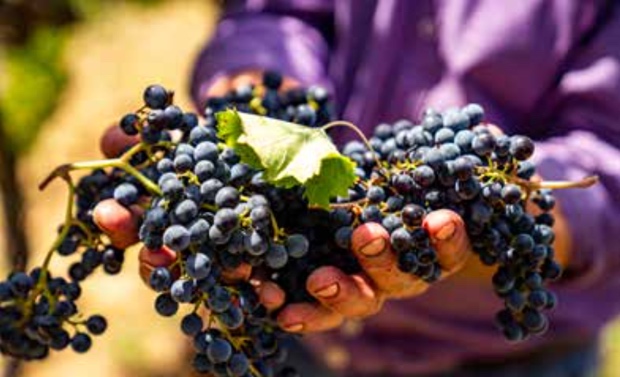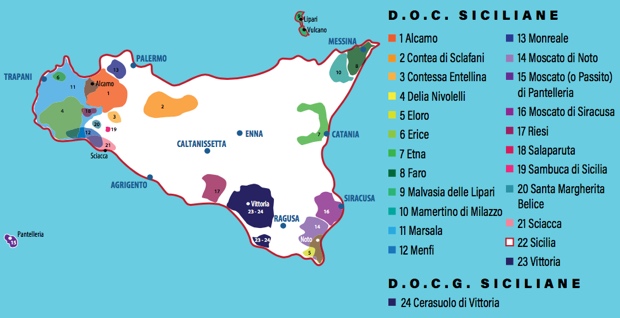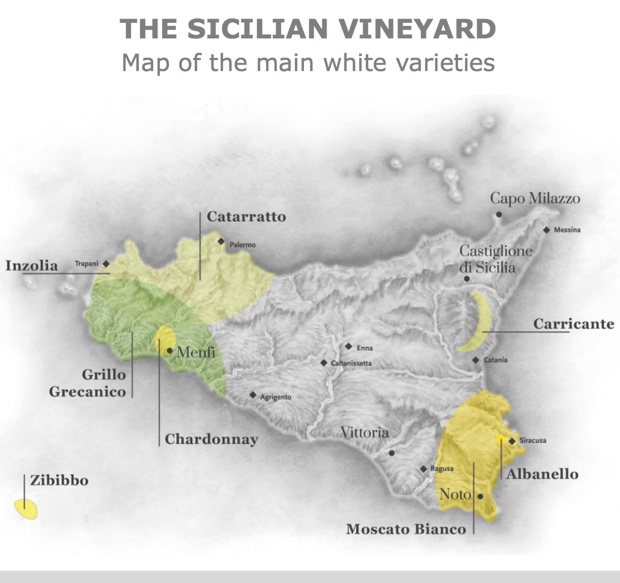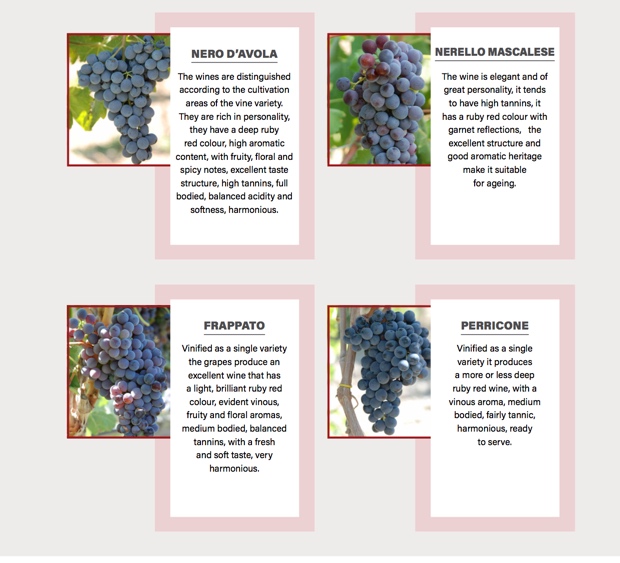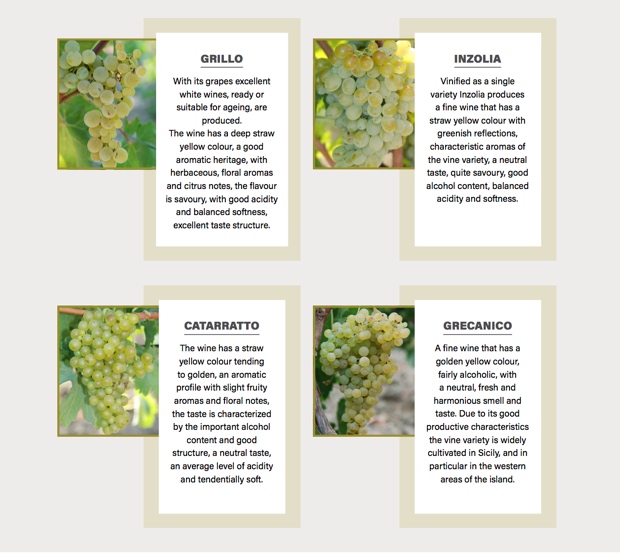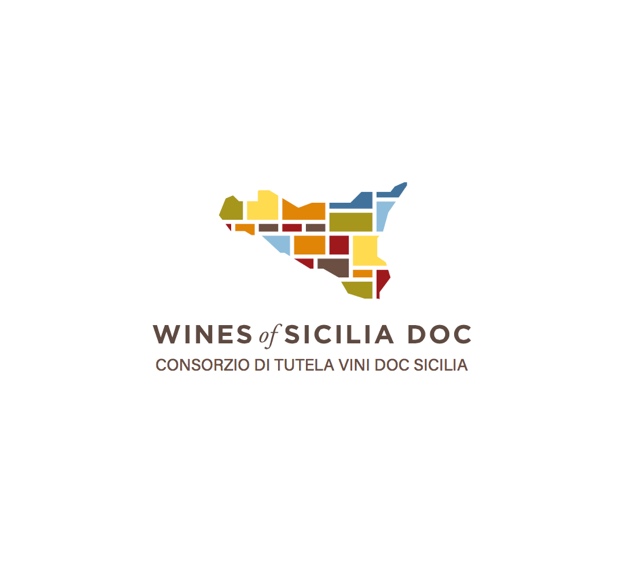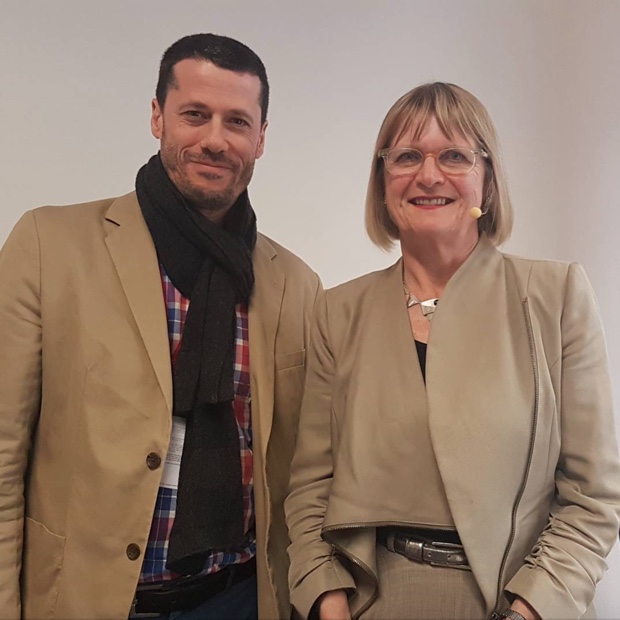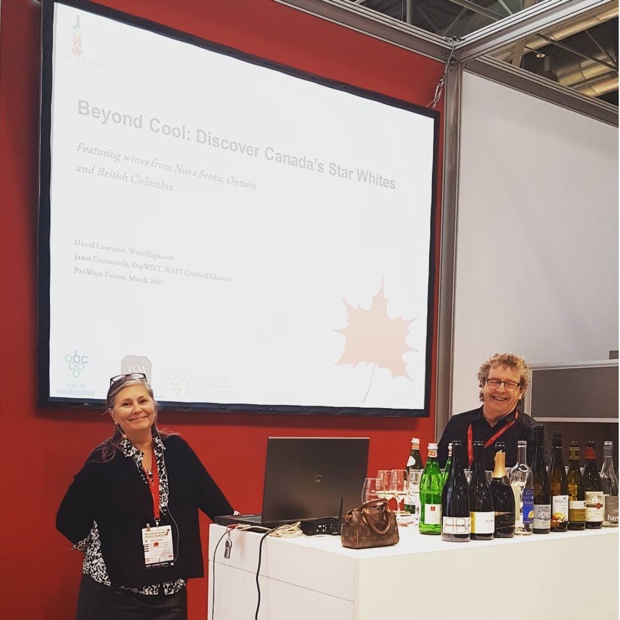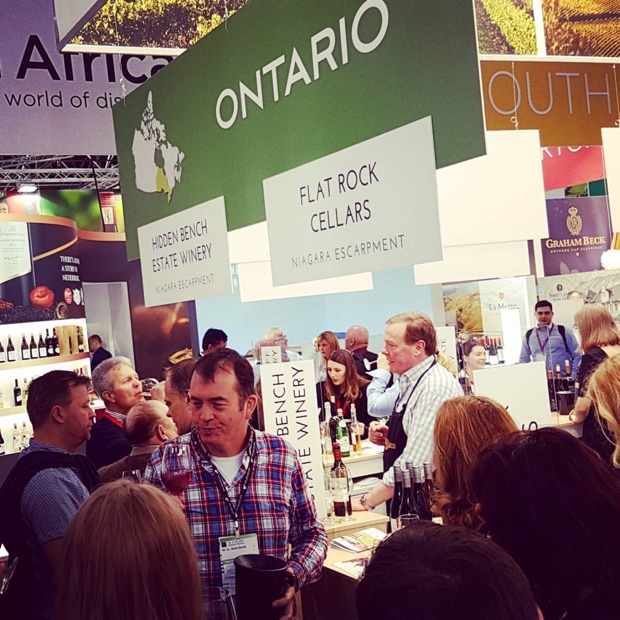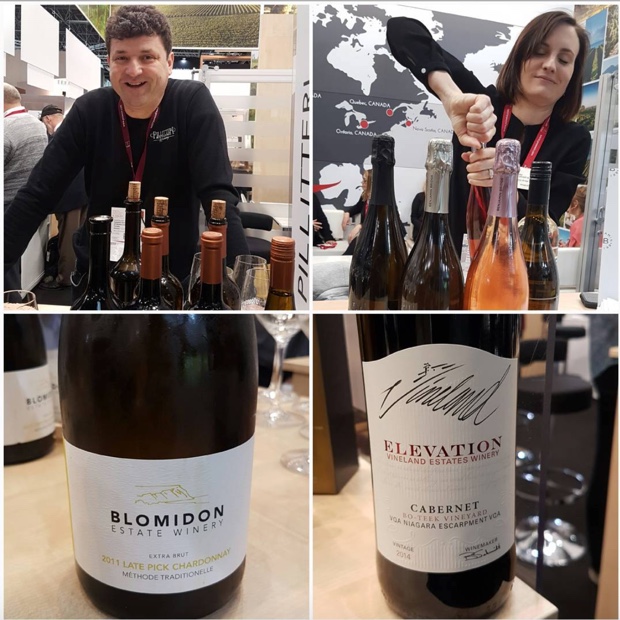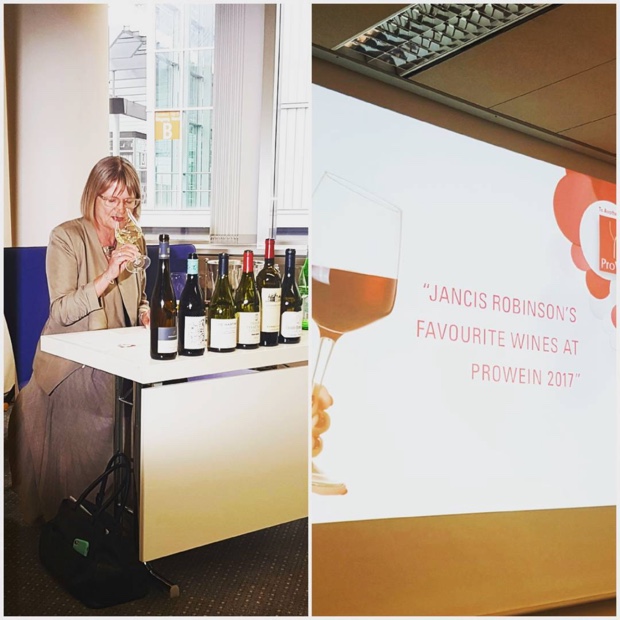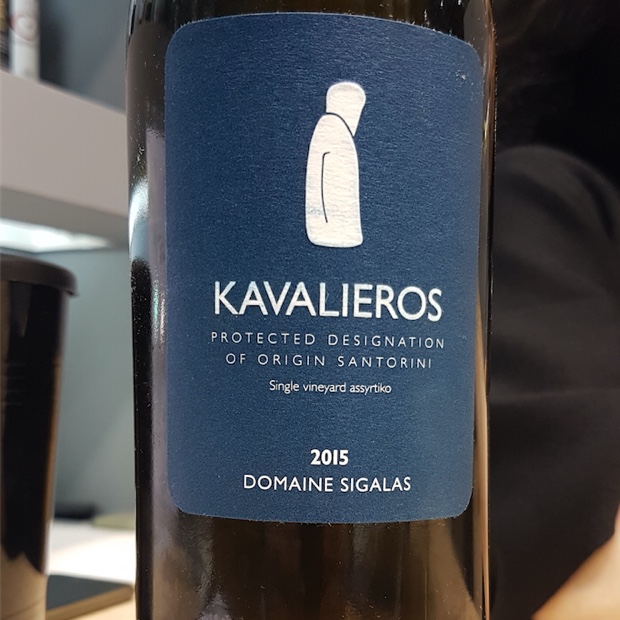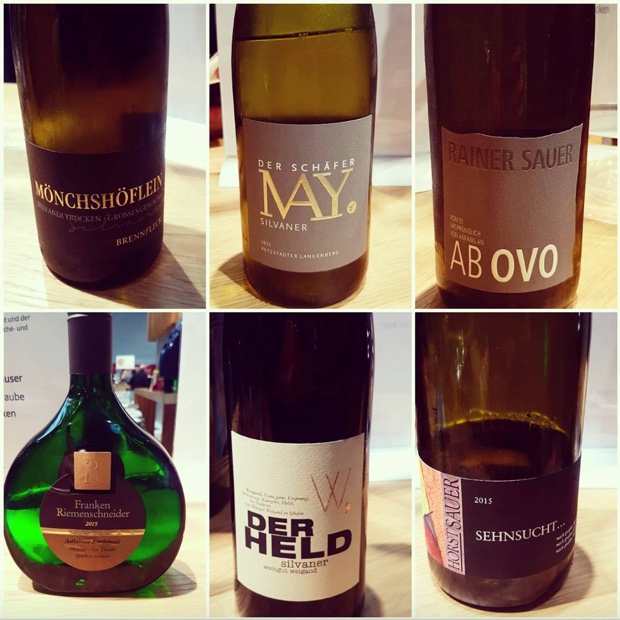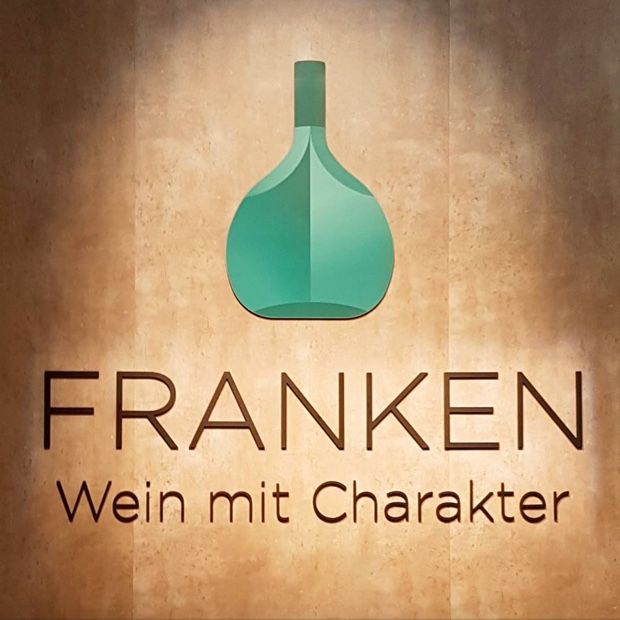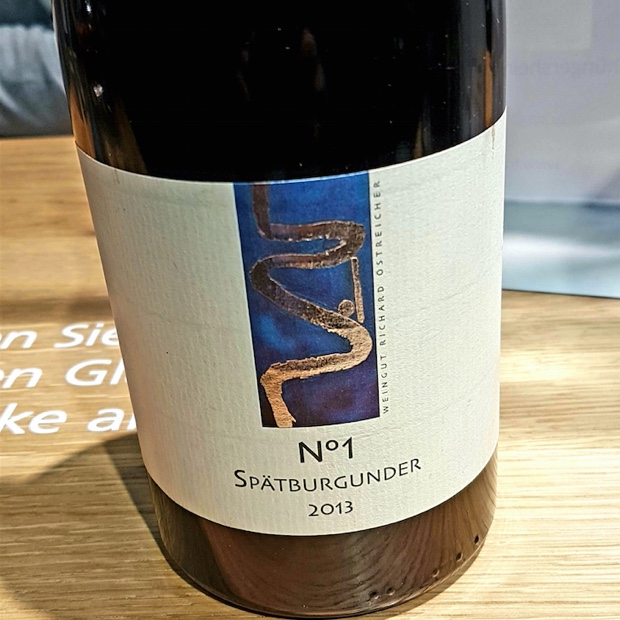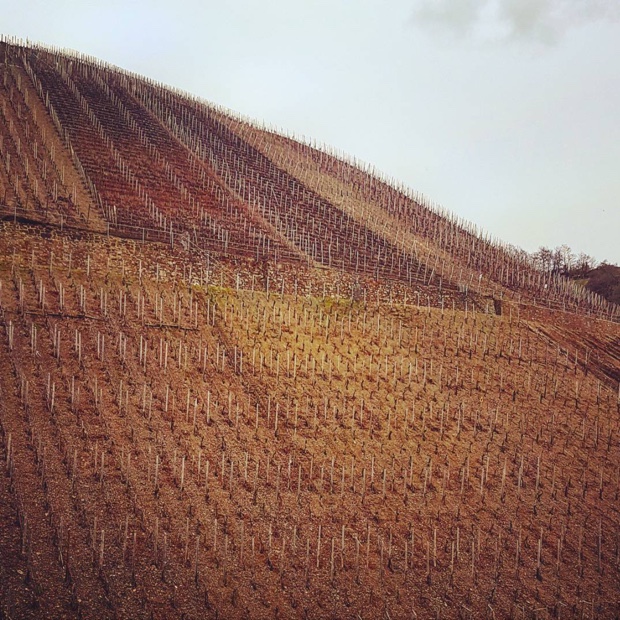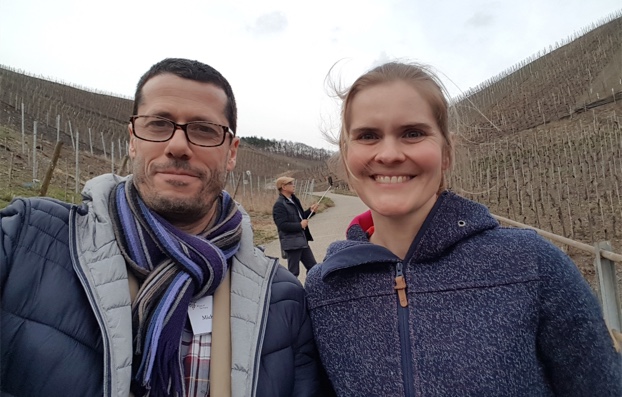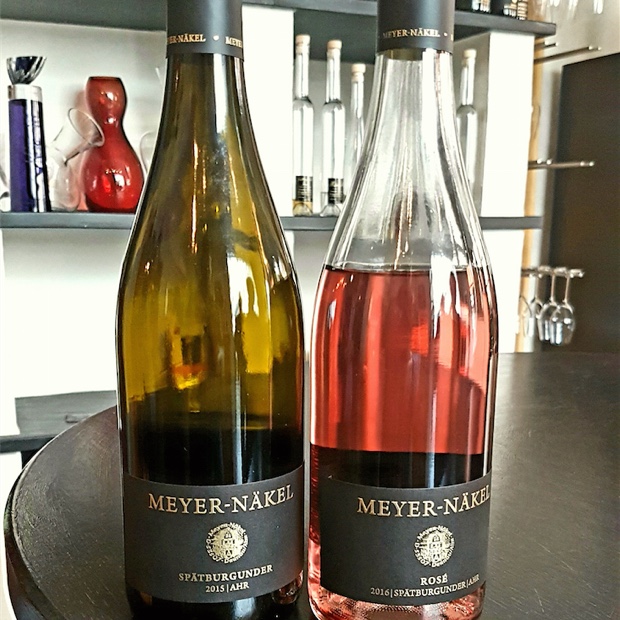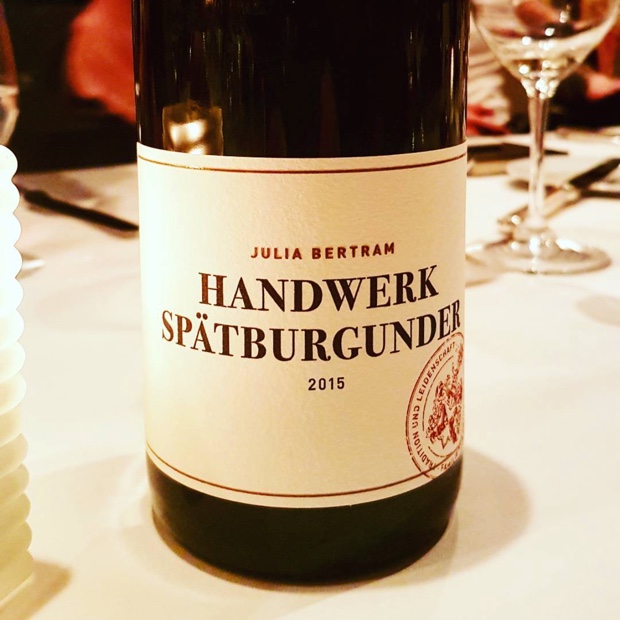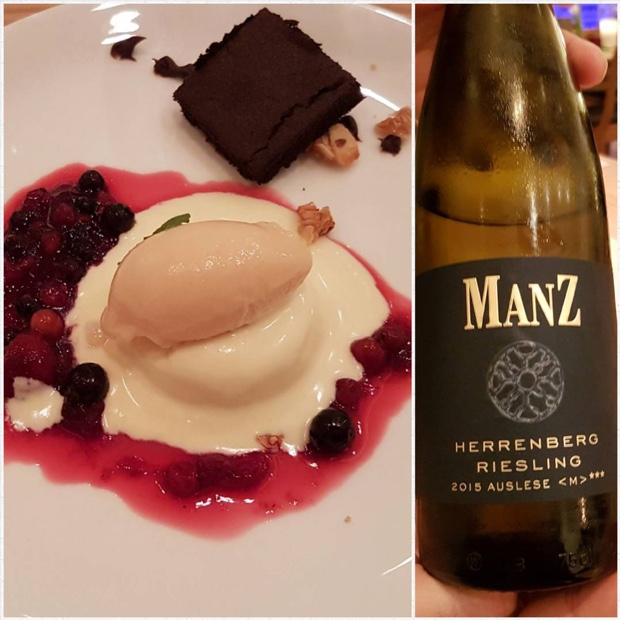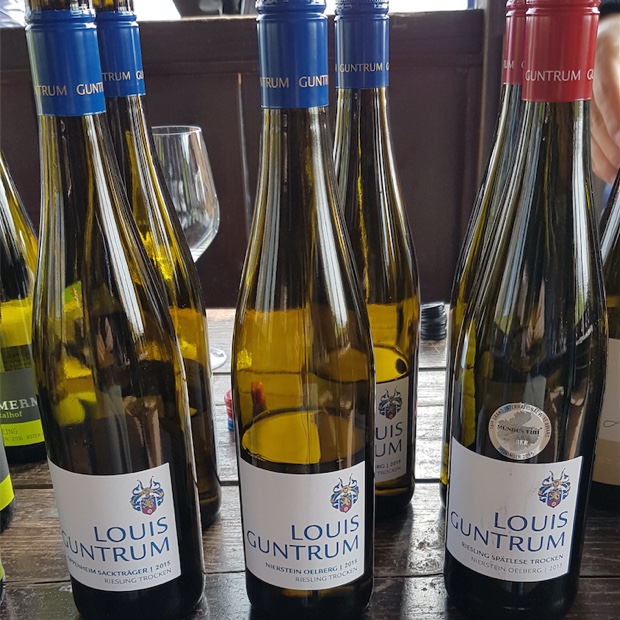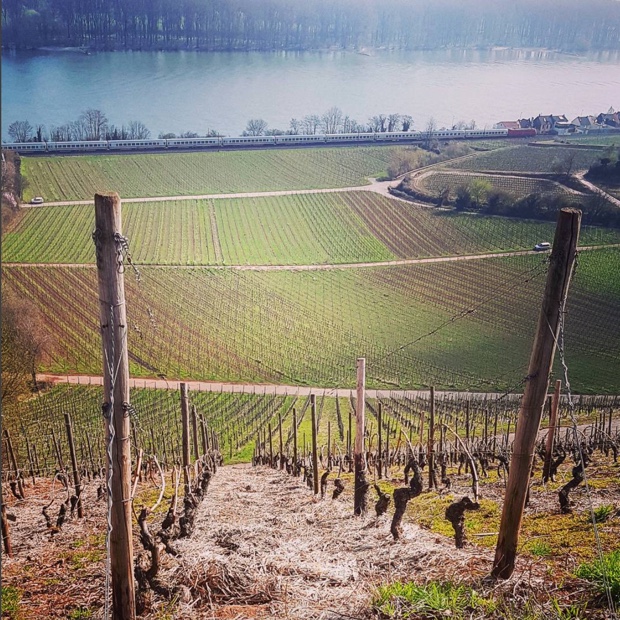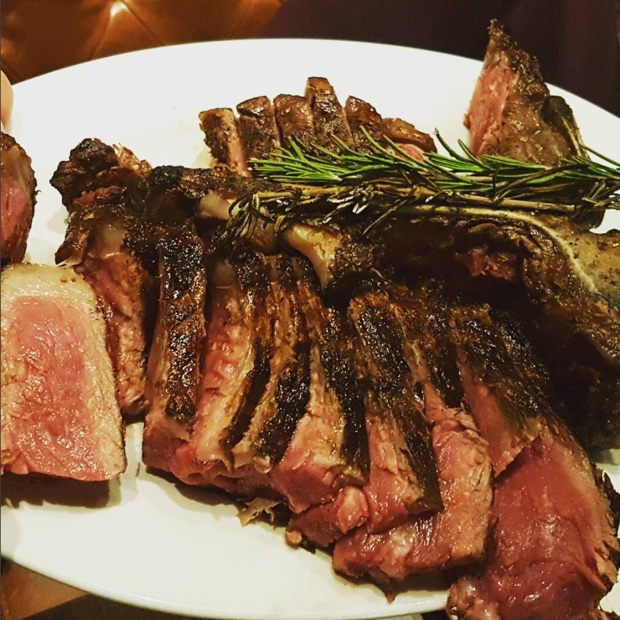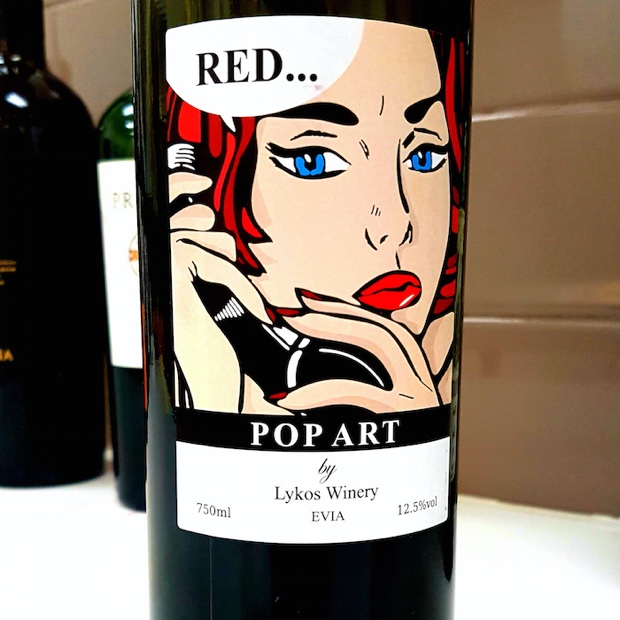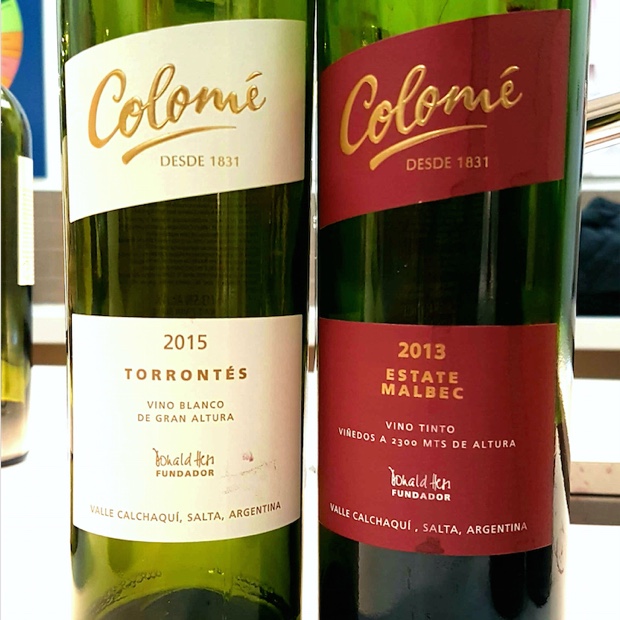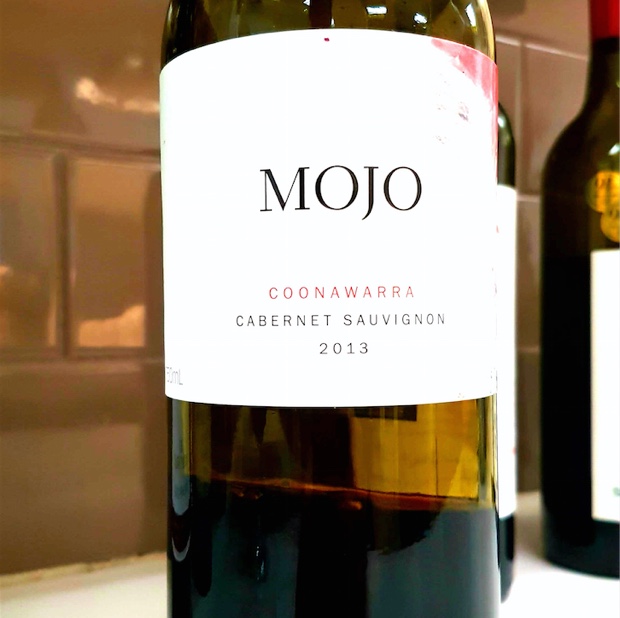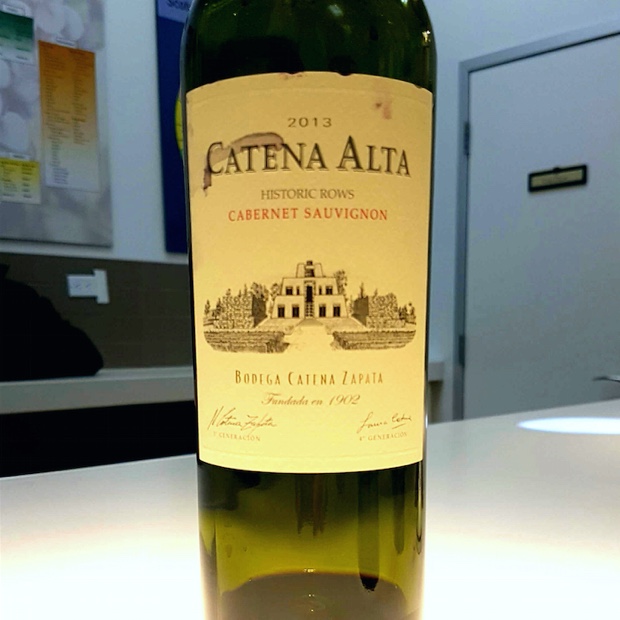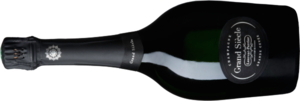
Nose deep at Baglio Christo di Campobello
Last week my first report from Sicilia en Primeur appeared over at WineAlign. I discussed the island’s amazing diversity of geography and how its producers have developed an uncanny ability in understanding of how to match their island’s multifarious and idiosyncratic varietal necessities to the über-specific demands of micro-climates and terroir. In that report 30 defining examples were explored and reviewed. In this Godello follow-up I offer up an expanded snapshot, with 45 additional tasting notes and dozens of images to highlight my eight days spent touring and tasting across bella Sicilia.
Related – Sicily’s varietal concentration: Measuring an island’s wealth in grape varieties, a journey through its winelands and tasting Sicilia en Primeur
~ ~ ~
As seen on WineAlign … Have you ever felt so at home or been so comfortable travelling as you have been in Sicily? If you’ve not been then you might not understand what I mean. Sicily is Casa quantu stai e tirrinu quantu viri, “home for as long as you need to be and land as far as the eye can see.” I always assumed it would be the water to captivate me, but from endless seas of wheat to grapevines covering plains, hills and terraces, it would always be about the land.
You might also think this island in the southern Mediterranean would ripen grapes with the sort of ease akin to some of the world’s warmest climates, like South Australia or the Western Cape of South Africa. Oh that it were so simple. In Sicily they say, Austu e riustu capu i mmennu, “after August, winter starts.” Growing grapes is truly a matter of place. You need to be specific with your grape varieties and match them to your micro-climate, but also your soils. This is a Sicilian necessity.

“Inside the doorway there’s me, endlessly thinking and working.” ~ The author at Tenuta Regaleali
A trip to Italy’s southern most wine region of a mere eight days is enough to be struck by the number of specificities Sicilian winemakers and producers have already figured out in order to make generational decisions. The success of any wine region depends on knowing where to denote qualitative probability so that it is possible to achieve the greatest results. This is the Burgundian model and yet Sicily’s vineyards are defined within a land of mono-estates, much like Tuscany in that its crus are single-owner farmed. This means that in order to qualify their best blocks and single-vineyards they must do so with ambition and ego. Unlike Tuscany the complication is much greater because they are not going at the exercise with just one grape. This might be looked at as a most difficult undertaking but if you own your problems and your decisions you can make it happen. In micro terms there are 23 DOCs and one DOCG. Go smaller and look at the hundreds upon hundreds of contrade, crus or small geographic areas defined in terms of soil types, including many layered volcanic lands. In macro terms this is also why the island has chosen to create an all encompassing category: Sicilia DOC. It is in fact the only DOC unanimously chosen to represent the region as a whole. In terms of size Sicily is equal to South Africa, Germany and three of New Zealand. Yes, it’s bigger than you would have thought.

Godello, Jessica Bordoni and Sharon van Minden
At Castellare di Castellina’s Niscemi outpost of Feudo di Pisciotto on the plain of Gela it is oenologist Marco Parisi who talks of their location six kilometres from the sea but even more about the specific micro-climate. He tells of a project called reliquendo, an investigative and experimental vineyard where they study 13 indigenous varieties nicknamed “relics” because they are cultivars that are no longer used. They continue to study these varieties just to check if some of them have the potential to become or return to be a variety good for wine production. The mixed plantings of red and white are then treated with micro-vinificatons. Parisi is also focused on nero d’avola. When he waxes about the island’s most important grape variety he refers to it as having a typical smell of straccio bagnato, the “air of wet cloth.”

Capo Milazzo, Sicily
Sicily is occupied by a variability of viticulture, rainfall, elevation and and soils. The diversity applies to nero d’avola as well, with so much variation in cluster and berry size, biotypes and clones. it’s just not the same grape everywhere it’s planted and grown; Menfi, Noto, Capo Milazzo, Vittoria and Etna. Noto has calcareous soils like Jerez and Champagne, not really comparable to anywhere else. Capo Milazzo is alluvial, deep soils, friables, out of rivers that came from the northern mountains. Menfi and the whole western side has energy and colour, violets, plum, chcolate and mint. Vittoria is red fruit in style, with bottle aging capacity, generally turning fruity to leafy and tobacco plus/minus chocolate. Noto is close by but it’s a mobile texture, silk and velvety tannins. Capo Milazzo’s proximity to the sea leads to salt, algae, black cherry and cypress. All this from Patricia Tóth of Planeta.

Feudo Principi Di Butera winemaker Antonio Paolo Froio
At Feudo Principi Di Butera winemaker Antonio Paolo Froio points out the mix of conditions just within the estate’s lands, eight kilometres from the sea and even greater, the importance of mountain influences. The variability of the calcareous soil provides very different results in (especially) nero d’avola. Three distinct parcels, Trapani in the west, the estate’s central plain and the “eastern theatre” are all planted to different clones. The west deals in fatter wines of lower acidities, the east in smaller, compact bunches and in the central plain, less compact bunches, bigger berries, high acidity and tannin. These revelations lead to correlations and being able to make desired blends in varietal wines. As a result Antonio’s wines are pre-emptive, planned with great foresight and always with a caution strike. They are focused, precise, clean, sophisticated, subtle and balanced.

Castello Falconara
At Baglio Del Cristo Di Campobello proprietor Carmello Bonetta delves deep into the highly specific and territorial chalky soils and a micro-climate of high day for night diurnal temperature fluctuations. The limestone/gypsum in this portion of Campobello di Licata is quartz-like though very fragmented and fragile and it is here where grillo, the child of zibibbo and cattarrato was born. Masseria del Feudo’s Carolina Cucurullo is a fourth generation farmer with two distinct vineyards in Caltasinetta and of the first producers to plant chardonnay, in 1991/1992.

Agronomist Davide Bacchiega, Tenuta Regaleali
You would have to search the island many times over to find an estate project with more research and experimentation behind it than that from Alberto Tasca of Tenuta Regaleali. There is no sea influence at Regaleali so higher diurnal temperature swings mean picking times are generally late September to late October. In Siciliy! Tasca tells us “you learn from the bees, to know if you are doing well.” And so the approach is sustainability, to measure impact, to grow regal varieties, use herbs and to create biodiversity in the vineyards. “Organic is too static,” says Tasca. “I prefer biodynamic. It’s more in touch with the land and the practices that associate with the land. Sustainability speaks the greatest to impact.” So he and agronomist Davide Bacchiega work with universities, learn about soil health, raise cover crops and sheep for ricotta.

Alberto Tasca, holding court at Tenuta Regaleali
The focus on syrah takes place at Moreale because it’s too cool and wet around the estate at Regaleali. There is experimentation with perricone, alberello bush vines for nero d’avola and cattarrato. Rain is collected in man made lakes, for use in arid vintages and for cleaning tanks. Rosemary and bay laurel grow everywhere. Inzolia is grown in the Barbabietole Vineyard and heritage vines are propagated by burying canes, waiting for budding, tying it down with an iron ring and then cutting a spur into the vines. This methodology and preservation helps to keeps the true nature and spirit of a wine like Rosso del Conte alive.

Melissa Muller and Fabio Sireci, Feudo Montoni
Which brings us to Feudo Montoni. Fabio Sireci’s secret world is found in the Contrada L’Homo Morto. This is the heart of Sicily, where provinces collide and in terms of elevation his estate is one of the highest (at 700m) and sits at the confluence of the winds, including the Sirocco that blows from North Africa. There is also 350 days of sunlight, something the surrounding wheat fields quite enjoy. But in Sireci’s vineyards there is no search for heat and alcohol, only freshness, high acidity, low pH and long life. Fabio says “we do not have a marketing plan, we have only what the grapes give to us.” His pre-phylloxera nero d’avola Vrucara vineyard houses 100-plus year-old alberello bush vines. Just as they do at Regaleali, at Feudi Montoni they make use of propagine, the method of replacing spaces where century vines have passed on, by burying an arm, allowing it to take root and then splitting it to become it’s own ungrafted plant. It’s quite simple. You can’t graft onto vines so old. “Everything here is stopped in time.”

Feudi Montoni, L’Homo Morto, Siclia
Feudo Montoni’s history goes back 1500 years with Roman records indicating that in the sixth century there was a notation of this field as being a place where specific biotypes of vines thrived. If Fabio could ever get past his inferiority complex perhaps he’d celebrate such knowledge. His vineyard is that special, 30 of 80 hectares planted are all his, il nanismo, “the dwarf estate.” Fabio and his partner Melissa Muller make 25 vinifications of the same grape, every year. Talk about experimentation and dedication to varietal understanding. “I love my land and we choose the best areas to bring my wines to the world,” he says with no complex whatsoever. Whites (grillo, cattarrato and inzolia) are planted at the highest elevations, where the iron and the magnesium rule. The lower parts are sandy, from erosion, with the presence of fossils and shells from an ancient sea. There is also black soil, with humus, layered, stratified, above the argilo, clay and sand. This is where you find Vrucara. “It’s easy to make good wine, more or less” says Fabio, “but we need to transfer the soul of the vineyard into the wine. Please don’t take me for a crazy person.” No chance of that Fabio. What about nero d’avola? “It’s like a crazy horse,” he insists, “wild and crazy young, then slowly refines. It needs micro-oxygenation and producers shouldn’t look at it with the market in mind.” He finishes by asking “What is nero d’avola? Look at a map of Sicily,” is the answer.

Palermo
After visits to Feudi di Pisciotto, Feudo Principi Di Butera, Baglio Del Cristo Di Campobello, Masseria del Feudo, Tenuta Regaleali and Feudo Montoni I travelled to take part in the Sicilia En Primeur events. In Palermo I took part in a walking tour of the city. The original one day stroll through the city of Palermo concentrated on baroque and contemporary art. The tour highlighted the urban changes of the seventeenth century Palermo and the originality of Giacomo Serpotta’s sculptures together with contemporary works of art from both public and private collections: Palazzo Belmonte Riso – Regional Museum of Contemporary Art; Galleria Francesco Pantaleone at the Quattro Canti; Palazzo Butera – Massimo and Francesca Valsecchi Collection (a building site due to open on June 15th for Manifesta 12, the European biennial of contemporary art, opening in the city in mid June); Palazzo Torremuzza with the Bevilacqua collection of contemporary art (to be confirmed as it is a private house, normally not open to the public). Starting from the Quattro Canti, the baroque heart of the city, continuing to Piazza Bologni with Palazzo Belmonte Riso and ending at Palazzo Butera on the waterfront, art historian and contemporary art curator, Valentina Bruschi illustrated the most interesting antique and contemporary works of art.

#notthesame ~ #quattrocanti #palermo #siciliaep18 #siciliaenprimeur #fourcorners
In Palermo we listened intently to a panel discussing the current state of Sicily’s wine industry and its connection to the city. The presentations by Maurizio Gily, Mattia Filippi (Assovini Sicilia), Antonio Rallo (Sicila DOC), Planeta’s Alessio Planeta and Palermo Mayor Leoluca Orlando all looked to connect the island by the phrase stato stazione delle una perfetta, meaning the union is currently situated in a perfect state, working together for the common good.

Fountain of Shame, Palermo
More than 100 journalists representing a total of 22 countries took part in the recently concluded edition of Sicilia en Primeur, a preview of Sicilian wines organized by Assovini Sicilia. As Palermo is the Capital of Culture for 2018, the city’s Palazzo Riso, Museo d’Arte Contemporanea della Sicilia was chosen as the backdrop for the tastings, masterclasses and meetings with wine producers, confirming once again the increasing amount of attention that the island’s wine industry is attracting from all over the world. By the numbers 53 wineries participated in the event, 450 wines were presented for tasting in the wine producer halls (50 of which were en primeur tastings), 360 wines were presented in the tasting hall, 144 wines were on the wine list, 103 Magnums and five standing room only masterclasses.

Sicilia en Primeur Press Conference, Museo Riso, Palermo
Potential was also stressed by the mayor Orlando. In his speech he explained “this city, like the island’s wine industry, has managed to overcome its challenges and now, thanks to the commitment of many, it has become the Capital of Culture. In Palermo, we have witnessed a cultural change and the same applies to the world of wine: we know how to work together to use our Mediterranean origins to our best advantage. To draw an analogy between the experiences of Palermo and Sicilian wine, it is fair to say that we have managed to reconcile the roots and the wings of our existence. A metaphor indicating our respect for the past and commitment to the future.” The mayor summarized his message with three words about his city of Palermo. “Exciting, safe and inexpensive.”

Palazzo Butera Palermo
The decision to allow producers and bottlers across the island to bottle under the appellative umbrella code of Sicilia DOC has led to a 124 per cent increase in the number of bottles produced compared to the first two months of 2017. “Just reward for quality and control,” says Antonio Rallo, Chairman of the Sicilia DOC consortium, also known as Consorzio di Tutela Vini Doc Sicilia. “This growth data is no surprise to us and confirms the level of interest companies are showing in the Sicilia DOC designation. An important element is that all of the Sicilian DOCs showed a pattern of growth in the first two months of 2018, confirming, as in the rest of Italy, that our aim is increasingly focused on a designation system capable of guaranteeing greater quality and controls throughout the entire supply chain, both in Italy and abroad.”

Missed flight first order of business #espresso
Take nero d’avola and now grillo as great examples of how Sicily has wrapped their arms around native grape varieties to create market share. Both grillo and nero d’avola can only be sold under the Sicilia DOC label. Grillo’s achievement as a top 10 selling Italian white wine confirms the legitimacy of this decision and above all that consumers have greater confidence in a product that is protected and guaranteed. “We are very proud of the results obtained for our Sicilian Grillo wines, which further confirms the growth trend of the Sicilia DOC label,” remarked Rallo, “but in particular it highlights how safeguarding autochthonous vines can bring excellent results in terms of sales and induce greater confidence in a market that is increasingly aware of the importance of purchasing a traceable product. The adoption of monitoring and control activities highlights the value of our vine varieties and acknowledges the importance of a controlled and guaranteed supply chain.”

Sicila en Primeur, May 2018
My tastings across the island engaged no less than nine important grape varieties, plus the region’s most celebrated blend and only DOCG, Cerasuolo di Vittoria. The opportunities to taste happened during visits to the six aforementioned properties and the three-day intensive gathering in Palermo for Sicilia en Primeur. The four-part opportunity was split between Sommelier service, Masterclasses, walk around producer one-on-ones and a private morning hotel tasting from bottles generously offered by several producers and graciously collected by the JustSicily and Sopexa staff. The week’s wines included the whites; grillo, inzolia, carricante and cattarrato, plus the reds; nero d’avola, nerello mascalese, syrah, frappato and perricone. Most of the island’s table wines fall directly under the all-encompassing and smartly organized denomination of DOC Sicilia, with notable exceptions labeled as IGT Terre Siciliane. Deeper investigations took in the volcanic specialities of DOC Etna Bianco, Rosso and Rosato. Then there were wines from characteristic locations (and communes) such as Sclafani Bagni, Noto, Campbello di Licata, Milazzo, Niscemi, Cammarata, Mozia, Caltanissetta, Menfi, Butera, Acate and Vittoria. Here are my reviews of 75 wines tasted in Sicily.

Tasting through the range of Planeta Winery with winemaker Patricia Tóth ~ Image (c) Pasquale Buffa
Inzolia, Grillo and Catarratto
Masseria del Feudo Inzolia Sicilia DOC 2017, Sicily, Italy (Winery, WineAlign)
From vineyards in Caltasinetta at 450m, organic, picked in the third week of September. Wild ferment and done up in stainless steel. The inzolia with the most amount of lemon and orange peel to nose, it’s a very fruity and ripe rendition with the classic metallic tang and pith bitter finish. But it’s soft, amenable and gracious. Solid, non-agreesive inzolia. Drink 2018-2019. Tasted May 2018 masseria.del.feudo Masseria del Feudo

The lacquer of #polpo @ Baglio Cristo di Campobello
Feudo Principi Di Butera Insolia Sicilia DOC 2017, Sicily, Italy (Winery, WineAlign)
Seró is 100 per cent insolia, a selection of finest limestone parcels subjected to a very cold and extended maceration. Table sorting selection eliminates the smallest and least effective berries and then, a soft crush. Certainly an increase in texture and ripeness with both phenolic and sugar/alcohol but still comes across as the leaner, less tangy and oxidative style typical of winemaker Antonio Paolo Froio’s directive. Also an increase in tropical fruit aromatics. The aim is for a certain amount of longevity and this should extend three to four years though more than five would be a stretch. It’s a trial and the curiosity factor is one full of intrigue. Drink 2018-2020. Tasted May 2018 feudobutera Zonin francescozonin Sebastien Ouellet zonin1821 FeudoButera Antonio Paolo Froio Zonin Francesco Zonin
Feudo Montoni Inzolia Dei Fornelli Sicilia DOC 2017, Sicily, Italy (539932, $22.95, WineAlign)
“Inzolia sometimes is afraid of Inzolia,” says Fabio Sireci, “so it is so often mixed with chardonnay, because it’s considered too neutral.” In Montoni’s hands it has been a varietal wine for a few years now, learning from micro-vinifications, practicing, seeing what it needs. Here it comes with a combination of peach and citrus, saline without tasting at all of salt and so, what is this? It’s the sedimentary rock and the varietal soul. How else to explain the magic? Come un lama, like a blade, cutting through fruit that came bled from stone. Implosive impressionistic tang, thriving in the mouth. Terrific texture, like a laser. Drink 2018-2022. Tasted May 2018 feudo_montoni Fabio Sireci Feudo Montoni (Fabio Sireci) @feudomontoni

Masseria del Feudo Grillo Sicilia DOC 2017, Sicily, Italy (Winery, WineAlign)
Also from the vineyards in Caltasinetta, similar to the inzolia but an earlier pick (third week of August), wild ferment, same altitude, a rich and even creamy grillo but with a clarity defined by the trace elemental-mineral push of the vineyard. Orange segmented and a touch of grapefruit, peach skin, a slight pith, no barrel but characterized by lees. Might develop a honeyed note in a year which can only elevate the sense of balance. Drink 2018-2020. Tasted May 2018 masseria.del.feudo Masseria del Feudo

Love me a little lean and focused #grillo in the morning
Feudo Principi Di Butera Grillo DOC Sicilia 2017, Sicily, Italy (Winery, WineAlign)
The estate’s vineyards for grillo are upwards at 500m above sea level and the treatment is considered in many ways like what would be done for sauvignon blanc. A minor reduction means locked in freshness and grillo takes a turn towards snappy green apple fruit. It’s also terpenic, with white and yellow flowers, good persistence and the veering to the verdant side of the spectrum with a classic Butera lean strike. Drink 2018-2020. Tasted May 2018 feudobutera Zonin francescozonin Sebastien Ouellet zonin1821 FeudoButera Antonio Paolo Froio Zonin Francesco Zonin

Feudo Montoni Grillo Sicilia DOC Timpa 2017, Sicily, Italy (111252, $22.95, WineAlign)
Grillo here is warmer, fuller and more intense than 2016. This zibbibo and catarratto cross can’t help but see, feel, hear and sense all that it comes from, with a catarratto lucido heritage, more laser-like, with layered citrus, honest, clear and transparent but more aromatic and a minor note of akin to certain southern aromatic varieties. Orange zest and fennel broth mix with real fruit and the omnipresent stoniness. Drink 2018-2023. Tasted May 2018 feudo_montoni Fabio Sireci Feudo Montoni (Fabio Sireci) @feudomontoni
Feudo Montoni Grillo Sicilia DOC Timpa 2016, Sicily, Italy (111252, $22.95, WineAlign)
Fabio Sireci’s 2016 grillo carries the aromatics of sugary fruit with exceptional ripeness with thanks to long, slow and perfectly developed phenolics and of course, altitude in Sicily. The mouthfeel is magic with tropical lychee, mangosteen and green mango flavours. These are not aromas but actual flavours. From a member of “schizophrenic grapes that include it and vermentino,” personalities that split and divide depending on harvest time. This is picked early enough to avoid a terpene and gooseberry-figgy wine. Lemon, mint and musk all come in to play but it is the tropical fruit and pure acidity that take the reigns. The absolute level of elegant tart incarnate. So good. Drink 2017-2020. Tasted July 2017. feudo_montoni Fabio Sireci Feudo Montoni (Fabio Sireci) @feudomontoni

Carnage for two please, By Bye Blues @ Mondello Beach
Planeta Grillo Terebinto Menfi DOC 2017, Sicliy, Italy (Winery, WineAlign)
Planeta’s varietal grillo is raised at Cantina Ulmo in Menfi, a western Sicilian outpost where pebbly-inlaid deep soils are found around Lake Arancio. The terebinth is a Sicilian shrub with glossy fronds. a.k.a. Pistacia Terebinthus or white pistachio, used as rootstock for pistachio production. The Menfi grillo is pulled from a low lying clay vineyard at 50m. Aromatics and texture are equally rich at maximum ripeness as bottled sunshine, pomelo sago unctuous and so consumable. Mango trees are actually in the same family as pistachio but of more interest is the fact that the female trees produce the nuts while the male produces the pollen. Sounds familiar, not to mention that male and female pistachio trees are often grafted together to bring about pollination. Drink 2018-2019. Tasted May 2018 planetawinery plant dependent noble_estates @planetawinery Tóth Patricia @NobleEstates
Baglio Del Cristo Di Campobello Grillo Sicilia DOC Lalùci 2017, Sicily, Italy (Winery, WineAlign)
Lalùci in Sicilian dialect means “the lights” or in terms of financial crisis, carry on, stay the course, “keep the lights on.” As a solo artist (100 per cent) grillo carries a lemony freshness that gets lost in bianco (blends) and along with this citrus there too is a pith bitterness. Herbs are also in play, mainly thyme and a faint but deliciously subtle rosemary. What trumps the bianco is the seamless transition to palate weight, with a move to more tropical flavours, almost mango but certainly peach. A taste of 2009 shows can girl can age so stash one or two away for some early twenties fun. Drink 2018-2022. Tasted May 2018 cristodicampobello campobello_wine cristodicampobello
Baglio Del Cristo Di Campobello Grillo Sicilia DOC Lalùci 2009, Sicily, Italy (Winery, WineAlign)
The nine year-old grillo’s lemon is intensified, preserved, reduced to a curd’s flavour and consistency, now the light at the end of a dark tunnel. it’s a symbolic, if almost mythical bottle, only five Lalùci (now four) left in this world and certainly a romantic ideal. The lights are still on, the project still in operation and the family fully entrenched, exaggeratedly excited and carrying the torch from papa Bonetta. This is a lovely older wine, really well-aged, still alive, impressive in its longevity. Drink 2018-2020. Tasted May 2018 cristodicampobello campobello_wine cristodicampobello

#pecore di Regaleali
Tasca D’Almerita Grillo Mozia DOC 2016, Sicily, Italy (Winery, WineAlign)
This grape grows in particular among the salt flats of the Marsala Pond on the small island of Mozia, an environmental and archeological gem where the Phoenicians once passed through. There are 17 hectares of grillo di Mozia, with oenologist Giacomo Ansaldi at the fore, bush system (Alberello) planted vines on sandy soils and a pruning system with 10 buds on the cane to guarantee production but also to protect from wind, sun and heat. The grapes are sent over by boat to Regaleali for production. The grillo sees four months on the lees and while it was a challenging vintage with no rain from April to September, nature and the sea always bring temperature fluctuations. Excellent grillo here, sapid, rich and very mineral from vines deeply in search of trace elements. The marine influence in notable so this is like no other with a sémillon character but still with grillo fruit. Might develop some honey. Drink 2018-2022. Tasted May 2018 tascadalmerita @TascaWine Alberto Tasca Tenuta Regaleali Tasca d’Almerita

Tasca D’Almerita Catarratto Sicilia DOC Antisa 2017, Sicily, Italy (Winery, WineAlign)
Antisa is planted in the highest part of the estate, is harvested late, after nero d’avola, as well as perricone. It’s a vine that deals with heat and aridity stress better than grillo. This from Tasca is deeply rendered catarratto, of metallics and orange blossom, sapid again but with a candied floral that transfers to the palate and with more persistence. Pure lemon all over the finish. Drink 2018-2022. Tasted May 2018 tascadalmerita @TascaWine Alberto Tasca Tenuta Regaleali Tasca d’Almerita

Feudo Montoni Catarratto Sicilia DOC Masso 2017, Sicily, Italy (111252, $22.95, WineAlign)
Catarratto by Fabio Sireci is salty and sapid of course, carrying the name of the vineyard in the Contrada L’Homo Morto, Masso meaning “hill of rock.” It is point of fact catarratto that is cultivated at the highest point on the estate. Brings a clean and bright clarity, clarified through inox and then into cement tank. Few catarratto will deliver this balance between fruit and stone, with a calm warmth that settles on your palate. Drink 2018-2021. Tasted May 2018 feudo_montoni Fabio Sireci Feudo Montoni (Fabio Sireci) @feudomontoni
Mazzei Zisola Asiza Sicilia DOC 2017, Sicily, Italy (Winery, WineAlign)
This is third vintage of Zisola’s Azisa, finding great success even though Filippo resisted planting white grapes. The blend is grillo and catarratto of balance and decadence, ripeness from vintage, rich, summery, full of fruit and just a hint of skin contact. Drink 2018-2019. Tasted May 2018 marchesimazzei profilewinegroup Marchesi Mazzei – Castello di Fonterutoli Profile Wine Group

Missed flight fourth order of business @byebyebluesPA #mondello
Nero d’Avola
Feudo Principi Di Butera Spumante Brut Sicilia DOC Neroluce, Sicily, Italy (Winery, WineAlign)
This Charmat method sparkler is made from the dark-skinned nero d’avola and its impossibly pale hue makes the oxymoron that much more incredible. Picked mid August it smells like deep and dark red fruit and because it carries a naturally high number of natural sugar there is in no real need for dosage. Smooth, balanced, calm and fit with just the right amount of buoyant acidity. Drink 2018-2019. Tasted May 2018 feudobutera Zonin francescozonin Sebastien Ouellet zonin1821 FeudoButera Antonio Paolo Froio Zonin Francesco Zonin

Mazzei Zisola Noto Rosso Sicilia DOC 2016, Sicily, Italy (303925, $19.95, WineAlign)
Tasted with Filippo Mazzei in Palermo, Noto Rosso is nero d’avola from the Cantina in Sicily owned and operated by the Castellina in Chianti estate that produces Fonterutoli. A stainless ferment is followed by 50 per cent aging in stainless and 50 in 2nd and 3rd passage oak barrels, It’s a perfectly rich and plummy nero with great red liquorice tang and a distinction to celebrate pure, honest commerce. Very nero, very Noto. Drink 2018-2021. Tasted May 2018 marchesimazzei profilewinegroup Marchesi Mazzei – Castello di Fonterutoli Profile Wine Group
Feudo Principi Di Butera Nero D’avola Sicilia DOC 2016, Sicily, Italy (Winery, $18.95, WineAlign)
Really complex perfume, jumping from the glass, fresh, vital, from large plantings that make up more than 50 per cent of the agriculture. It’s both dark red fruit expressive and also herbal, of fennel and then a territorial limestone impression running through the fruit. Quite chewy and expansive in the mouth, all a result of stainless fermentations followed by older, larger barrels, 30 and 50 hL. Gives a broad, soft, elasticized and stretched palate texture with no departure from varietal and place. Very focused, clean, modern interpretation with no excesses, attitude or conceit, nor ambition neither. Drink 2018-2021. Tasted May 2018 feudobutera Zonin francescozonin Sebastien Ouellet zonin1821 FeudoButera Antonio Paolo Froio Zonin Francesco Zonin
Terre Di Giurfo Nero d’Avola Sicilia DOC Kuntari 2014, Sicily, Italy (Winery, $19.50, WineAlign)
Kuntari is where the classicism of soil meets barrel-driven nero d’avola is fixed at the twain so that high tonality raises the awareness of sun-worshipped fruit. While that is happening there is no love lost at the vortex of that union because it is blessed by tannin. Plum dusty and full of medicinal herbs this brings back the past and a most recent account of how nero d’avola arrived at this place and time. It’s a big nero, warm, grippy and powerful. Drink 2019-2024. Tasted May 2018 terredigiurfo cavinonawine Terre di Giurfo Cavinona – Italian Wine Delivered

Pasta al Forno, by Melissa Muller
Feudo Montoni Nero d’Avola Sicilia DOC Lagnusa 2016, Sicily, Italy (523738, $22.95, WineAlign)
Lagnusa is a nickname though Fabio Sireci doesn’t clarify if its him, or perhaps his father, or a farmer on the property. These nero d’avola vines come from grafts taken off of the ancient Vrucara. Fabio’s “entry-level” nero is one of a younger, youthful maturity and a prune-cinnamon-salumi trilogy, with only a hint of wood, micro-oxidation by cement vats and ultimately fruit-earth-black sandy stone earth balance. Always the Cammarata comune in the Province of Agrigento Montoni sapidity, of grit, grip, strength and understanding. A double rainbow might just appear after a sip of this regional nero d’avola from the Montoni property. Drink 2019-2024. Tasted May 2018 feudo_montoni Fabio Sireci Feudo Montoni (Fabio Sireci) @feudomontoni
Planeta Nero d’Avola Sicilia DOC Plumbago 2016, Sicily, Italy (Agent, $24.99, WineAlign)
Plumbago the nero d’avola from Menfi and the purple wildflower that grows in the woods and around the farmhouse at Planeta’s Ulmo estate. Lake Arancio is the vineyard location for the downiest nero in town. Soft in terms of fruit but high acidity full of pulse and energy, a tart intensity and a brushed swath of current, in every colour, crack-scented, tang-sapid and liquid chalky textured. The homes are 3rd and 4th passage barriques and tonneaux plus a year in bottle to market. Lovely balance on the high beams caught in the frame of the headlights. Drink 2018-2021. Tasted May 2018 planetawinery plant dependent noble_estates @planetawinery Tóth Patricia @NobleEstates

Baglio Del Cristo Di Campobello Nero d’Avola DOC Sicilia Lu Patri 2015, Sicily, Italy (Winery, WineAlign)
In Sicilian dialect Lu Patri means “the father,” explains Carmello Bonetta, “which is really my father but also every father” and the variety is the father of them all. At Cristo Di Campobello nero d’avola plays the part of everyone’s father, including the evocation of the religious one, the most representative. Here the specific chalky limestone works with grape variety and peeks through despite the make up, bringing a zinging, ripping, tart and tangy nd’a with energy and that classic acidity. Also the classic amaro bitters, part burnt orange, part liquorice and part fennochio. This should age with stony ease. Drink 2020-2027. Tasted May 2018 cristodicampobello campobello_wine cristodicampobello
Baglio Del Cristo Di Campobello Nero d’Avola Sicilia DOC Lu Patri 2009, Sicily, Italy (Winery, WineAlign)
We tasted two bottles of Lu Patri 2009, the first being a bit muted, not very evolved, a character that could be described as one of slow micro-oxygenation. In the second a minute advancement and I agree with Carmelo that this is preferable, because by now it is clear that all of his wines get better with age. They are not that much fun when stuck inertia-like in their undeveloped youth. The evolution at this stage has brought wild cherry, part fresh (Yes!) and part dried. The acidity is linear up and down the sides of the mouth and the length exceptional. First wine with true chocolate and espresso ahead of the balsamico. The last supper nero d’avola. Truly. Drink 2018-2022. Tasted May 2018 cristodicampobello campobello_wine cristodicampobello

Tasca D’Almerita Nero d’Avola IGT Terre Siciliane Lamùri 2016, Sicily, Italy (Winery, WineAlign)
Lamùri is 100 per cent nero d’avola from a 2002 initiated project where it was decided to do research and bring some quality love to the grape. “L’amour” (l’amore) in Sicilian, this selection is from two high altitude (450m) vineyards with time spent in some oak barriques of 2nd and 3rd use, to savour, flavour and spice, which it does, without make-up or cake baking. It’s all red fruit, some dried, with a fennel, bay laurel herb-crust. Florala, sapid as all these wines are, ropey and with fine acidity. Drink 2019-2023. Tasted May 2018 tascadalmerita @TascaWine Alberto Tasca Tenuta Regaleali Tasca d’Almerita

A missed flight due to strike opens the door to more #degustazione now with the archetypes of @vdawinery ~ #cerasuolodivittoria
Valle dell’Acate Nero d’Avola Sicilia DOC Il Moro Limited Edition 2015, Sicily, Italy (Agent, $34.95, WineAlign)
This speciality of nero d’avola is labeled vendemmia da uva ultramatura, an understatement for the rich, black earth and steady Mediterranean sun that forms a crust and injects a voluminous, mineral liquid intensity to capture earth and sky. Il Moro could be the Moor, of Arabic identity, dark-haired or dark-skinned, certainly apropos for the grape and for the cimmerian yet transparent action of this wine. Let it breathe, settle and exhale. This will ready itself at just about the same time as the ’14 which makes it just a touch more amenable and in turn, beautiful. Drink 2021-2028. Tasted May 2018 vdawineryValle dell’Acate halpernwine Valle dell’Acate Halpern Wine
Valle dell’Acate Nero d’Avola Sicilia DOC Il Moro Limited Edition 2014, Sicily, Italy (Agent, $34.95, WineAlign)
Il Moro is a child of a wholly antithetical vintage and this particular brooding Moor of a nero d’avola is actually the reductive one as compared to 2015. The vintage will clearly deliver more age ability as the fruit is locked in tight behind an iron, black soil curtain. Sun is a factor but there is more understated wealth and probably balance here, though it’s not nearly as gregarious and open as ’15, which is saying alot. The fruit seems richer and the violets are everywhere. Drink 2021-2029. Tasted May 2018 vdawineryValle dell’Acate halpernwine Valle dell’Acate Halpern Wine
Azienda Agricola Cos Nero Di Lupo IGT Terre Siciliane 2016, Sicily, Italy (Agent, $36.95, WineAlign)
Nero di Lupo is the “black wolf,” a would be reference to the nero d’avola grape variety and specific to how it grows in this southern Sicilian clime. Perhaps a sheep in wolf’s clothing, pecore in abiti da lupo, there is this docile, domicile quality but with teeth and bite behind. Don’t poke this bear and don’t expect it to lay down, soften and play dead any time soon. It’s a tightly knit nero d’avola, spun with fine natural acidity and even finer tannin. The dark rooted, soil driven fruit is earthy but in a wholly sapid and structured way. Are there any other nero d’avola that taste like this? Methinks not. Drink 2019-2028. Tasted May 2018 giustoocchipinti thelivingvine #COSwinery AZIENDA AGRICOLA COS The Living Vine inc.
Valle dell’Acate Nero d’Avola Vittoria DOC Tané 2013, Sicily, Italy (Agent, WineAlign)
Tané is from the eastern part of the island in Bidini Contrada. Now falling under the auspices of the Vittoria DOC this 100 per cent nero d’Avola used to be labeled as IGT Sicilia Rosso (through 2011 and there was no production in 2012). Extremely low, not totally commercially viable yields deliver this intense, extracted, concentrated and grippy nero in the way of let’s say, Ruché but with deeply layered and furthered phenolics. A big wine with solid architecture and a wild, floral intensity needs time and a carefully selected Sicilian arrosto. The tanned one is certainly kissed by the Mediterranean sun and rendered deeply hematic by the dark red soil of Bidini. Drink 2021-2029. Tasted May 2018 vdawineryValle dell’Acate halpernwine Valle dell’Acate Halpern Wine
Mazzei Zisola Noto Rosso Sicilia DOC Doppiozeta 2015, Sicily, Italy (SAQ 11792138, $39.75, WineAlign)
Doppiozetta is from two single estate parcels in vineyards and a then selection of top grapes from there, while the name seems to denote double the Latin numeral septem, meaning seven. Not sure if this should be two sevens of two times seven or maybe even two (or twice) the decimal unit prefix in the metric system denoting a factor of 10 to the 21st power. Regardless, the mathematical concentration of this Sicilian iconic original and most important wine of the estate is impressive. It is made with a selection of endemic nero d’avola, rigorously bush trained, a self-professed “super nero,” and the real usage of Doppiozeta highlights the ZZ-top core of the Mazzei name. This nero d’avola is fresher and higher toned, more floral with a ferric push, mineral though as if by shells of the sea, full and Mazzei structured, needing some time. Drink 2019-2024. Tasted May 2018 marchesimazzei profilewinegroup Marchesi Mazzei – Castello di Fonterutoli Profile Wine Group
Planeta Noto DOC Santa Cecilia 2015, Sicily, Italy (Agent, $54.99, WineAlign)
The first vintage was in the late 90s and the appellation eventually became DOC Noto, with the initial vintage of 2003 having been where it was fully done in Noto, but 2008 is the official DOC recognition. This is when both Noto and Sicilia are on the label for the DOC to be recognized as 100 per cent nero d’Avola. Comes by way of the white chalky soils of Noto and is deceptively rich, deeply rendered, of an incredible acidity, dark and viscous fruit. There is so much happening in violet florals and light. Did I mention the acidity, amazingly linear but waiting to circle and become ringing. Drink 2019-2025. Tasted May 2018 planetawinery plant dependent noble_estates @planetawinery Tóth Patricia @NobleEstates

Planeta Noto DOC Santa Cecilia 2014, Sicily, Italy (Agent, $54.99, WineAlign)
Didn’t think it would be the case but 2014 has just begun to accept a peak behind the curtain into the world of where it may be going. Just a minor Noto note of development, a first peeled layer, one strip of wood and veneer shed. So very strawberry, rolled up and compressed, from the wet vintage that followed a dry winter. It’s still a bit tight, with linear acids and a great concern of purpose and strength. Not the most structured Santa Cecila of all time but certainly built for a 10 year run. Drink 2018-2024. Tasted May 2018 planetawinery plant dependent noble_estates @planetawinery Tóth Patricia @NobleEstates
Planeta Noto DOC Santa Cecilia 2011, Sicily, Italy (Agent, $54.99, WineAlign)
Santa Cecilia from 2011 is a special nero d’avola, balanced in silent but sweetly deadly acquiescence of Noto’s white chalky soils. Her tannins are abundant and smooth, running in one direction and so it’s a wonder how un-evolved and yet so involved this nero d’avola is equipped to believe about and with great kindred spirit with itself. That it presents this youthful and yet to advance is a thing magical and sincere. Inner strength is one thing but outward beauty is the real deal. Or is it the other way around? Either way they combine for one of Cecilia’s greatest acuity and remainder of structure. Drink 2018-2026. Tasted May 2018 planetawinery plant dependent noble_estates @planetawinery Tóth Patricia @NobleEstates
Planeta Noto DOC Santa Cecilia 2007, Sicily, Italy (Agent, $54.99, WineAlign)
Time has been kind to Santa Cecilia Noto 2007, sidled along and preparing a path laid out with dried fruit, tobacco and black currant-Cassis development. There is this cool eucalyptus, menthol, chinese herbal medicine, cola and chocolate combing and combining that lingers for longer than the road to Noto. In just a two week span I was blessed to taste vintages ’07, ’08, ’11, ’14 and ’15 and I’ve come to a conclusion. No two Noto nero d’avola by Patricia Tóth are alike and the theories of relativity need not apply. They are snowflakes and children of singular personalities. But they all speak one of Sicily’s clearest and most transparent brands of nero d’avola vernacular. The language of 2007 is savoury, mild mannered Mediterranean and structured, but never grippy or too firm. It’s just right. Drink 2018-2021. Tasted May 2018 planetawinery plant dependent noble_estates @planetawinery Tóth Patricia @NobleEstates

Feudo Principi Di Butera Nero D’avola Sicilia DOC Deliella 2015, Sicily, Italy (Winery, $55.00, WineAlign)
Deliella is a selection in the vineyard, from edgy, prurient and analytical investigations in special vineyard blocks with maximum of five bunches per vine to find more concentration from each vine. It’s actually quite a taut and reserved nero d’avola with a slow release of aromatics and charm, dark liquid fruit chalky, structured and quite calm. Takes its time but the acidity carefully climbs up and down the sides of the mouth to stress its position in the overall architecture. Aged in 30 hL casks (and larger tonneaux) for 14 months. There will be some extended longevity here, not forever but likely five to seven years. Drink 2019-2024. Tasted May 2018 feudobutera Zonin francescozonin Sebastien Ouellet zonin1821 FeudoButera Antonio Paolo Froio Zonin Francesco Zonin
Feudo Principi Di Butera Nero D’avola Sicilia DOC Deliella 2014, Sicily, Italy (Winery, WineAlign)
Deliella for nero d’avola ’14 is clearly a different vintage but a year in bottle has helped to release the early aromatics, even if it’s a more savoury and herbal than fruit matter at this stage. The red berries and plums are studded by sprigs of rosemary, the calcari runs through chalky and flashes its committed comet-commute trail of fine tannin. Close your eyes and try to really enjoy the fruit that fills the mid-palate you don’t yet see from 2015 and will no longer come from vintages as old as 2005. Ultimately it is the integration and fineness of the moving parts recognized for greater harmony from this vintage. Drink 2018-2023. Tasted May 2018 feudobutera Zonin francescozonin Sebastien Ouellet zonin1821 FeudoButera Antonio Paolo Froio Zonin Francesco Zonin
Feudo Principi Di Butera Nero D’avola Sicilia DOC Deliella 2005, Sicily, Italy (Winery, WineAlign)
At 13 years you can see how the time that has passed goes beyond what the grape is really capable of, though these tertiary aromas are more than curious and in fact they are charming to the point of fascinating. Figs and caramel-balsamico reduction but also dried red fruits, like a cross between plum and liquorice with accent by fennel, rosemary and mint. It’s interesting that the acidity is still a part of the Deliella effort, saying something real about this territory, the three-part vineyard harmony, these chosen clones and how age develops along with balancing nero d’avola energies. Finishes saline and you need to linger with it to see what will happen. Not quite time to close the book. Drink 2018-2019. Tasted May 2018 feudobutera Zonin francescozonin Sebastien Ouellet zonin1821 FeudoButera Antonio Paolo Froio Zonin Francesco Zonin

Soils of Feudo Montoni
Feudo Montoni Nero d’Avola Sicilia DOC Vrucara 2014, Sicily, Italy (111286, $58.00, WineAlign)
Vrucara is labeled by cru on the front label and only as varietal on the back because the place is the most important ingredient, so that the grape can be separated from not only the rest of the estate but also from the rest of Sicilia. Only this cru does this for nero d’Avola. Only Vrucara and its ungrafted pre-phylloxera, European 100 plus year-old wisdom knows the soul of place to transfer into wine. It is a wine that has already developed the acumen it will carry through life. Freshness and acidity are a right from birth and need six or seven years to not move into secondary life but to begin at all. Acidity is upward of 8.2 g/L of tA and it lifts not just fruit but soul. Vrucara is wild grass that lives under the vine, in the words of Fabio Sireci “not a wine to make but a wine to protect.” A wine that carries the torch, flag, signature and emblem of estate, varietal and island. There are 4500 bottles produced Drink 2019-2031. Tasted May 2018 feudo_montoni Fabio Sireci Feudo Montoni (Fabio Sireci) @feudomontoni

Feudo Montoni Nero d’Avola DOC Sicilia Vrucara 2008, Sicily, Italy (Winery, WineAlign)
The answers are so simple and yet unanswered because magic is involved. You can understand the old vines and the way their fruit turns into wines that begin with ancient wisdom but move so little in the first seven years. What happens at 10 is the turning outward, to express the place and speak the dialect of the cru. The acidity is still high but is now in lift, with fruit at the height and en anergy that flows, really flows, moving across your palate with grace, grab and attention. A contiguous wine from start to finish, with intensity, impression and precision. The structure is come cavallo domato, like a trained horse. Dramatic nd’A but with no drama at all. Tamed and in respect of ancient vine, where it grows and what it wants to give. “Ma zitto,” a wine to keep you silent. Drink 2018-2029. Tasted May 2018 feudo_montoni Fabio Sireci Feudo Montoni (Fabio Sireci) @feudomontoni

Cerasuolo di Vittoria

Feudi Del Pisciotto Cerasuolo Di Vittoria DOCG Giambattista Valli 2016, Sicily, Italy (Agent, $36.95, WineAlign)
Giambattista Valli Cerasuolo di Vittoria is 60 per cent nero d’Avola and 40 frappato, in attest of 14 per cent alcohol, a terrific vintage and 10 months in barrique. Exceptionally aromatic, this is a perfume of great ambition as it almost smells like American oak but it’s only French, with creosote, vanilla, lavender and tarragon. Rich in mixed soil impart, from sand and clay. It’s a very deep impression, tasting like pomegranate concentrate, with plenty of acidity and fine, mild tannins. It’s so very purple, as in its phenolic fruit content and consistent, slow maturation. There was no speeding up of the polyphenolics from overly hot summer months. Made for whole cuts of beef, cooked rare and sliced, running bloody. Drink 2018-2021. Tasted May 2018 feudidelpisciottowinerelais castellarewine dionysuswines Feudi del Pisciotto Wine Relais Castellare di Castellina Dionysus Wines & Spirits Ltd.
Terre Di Giurfo Cerasuolo Di Vittoria DOCG Maskarìa 2014, Sicily, Italy (Winery, WineAlign)
Maskarìa is a top quality vintage for the only Sicilian DOCG in a red that captures the union between nero d’avola and frappato. This dark soil driven Cerasuolo di Vittoria suggests more nero dominance but with fruit forward assistance from the lighter soil raised frappato. Really hits both the high tones and low baritone notes, one and then the other, for maximum effect. Once again it is high acidity, not unlike some Aragonese garnacha or Monferrato barbera that sings the loudest in the chorus. Big wine indeed. Drink 2019-2025. Tasted May 2018 terredigiurfo cavinonawine Terre di Giurfo Cavinona – Italian Wine Delivered

A missed flight due to strike opens the door to more #degustazione now with the archetypes of @vdawinery ~ #cerasuolodivittoria
Valle dell’Acate Cerasuolo di Vittoria DOCG 2014, Sicily, Italy (Agent, WineAlign)
The iconic blend is 60 per cent nero d’Avola and (40) frappato from vineyards located on the Bidini Soprano plateau. The frappato vines are planted in clear red soil while the dark red soil produces nero d’Avola. The Classico comes to market a year and a half (in this case 21 months) after the previous September harvest, a key ingredient to integration, harmony and ultimately success. This is part of the estate’s project known as seven terroirs for seven wines. The age ability here is strong, with high-toned acidity and the notable presence of firm, grippy tannin. Words like benchmark and traditional are two ways to look at it. Drink 2020-2027. Tasted May 2018 vdawinery halpernwine Valle dell’Acate Halpern Wine

Planeta Cerasuolo Di Vittoria Classico DOCG Dorilli 2016, Sicily, Italy (Agent, $38.95, WineAlign)
Cerasuolo di Vittoria Classico is one thing, Dorilli 2016 is another matter altogether. The name of the estate marks the iconography of this Planeta blend, from a chosen vineyard carrying the dialectical tome of the river passing by. The old maps say Dirillo but through time this has changed, just like this Burgundian wine will draft through wake and evolve. There is a minor reduction here so it’s not as open as the normale though it’s offset by an extra year of aging for release 18 months after harvest. Blooming should happen some time in 2019 after the 70 per cent nero d’avola and (30) frappato begin to unfold out of itself for a full and layered Vittoria. Still there is the Cerasuolo fragrance from a guarantee by vintage and for texture. Drink 2019-2027. Tasted May 2018 planetawinery plant dependent noble_estates @planetawinery Tóth Patricia @NobleEstates

Rosso del Conte
Tasca D’Almerita Rosso del Conte Monreale DOC 2007, Sicily, Italy (Winery, WineAlign)
Rosso del Conte comes out of the DOC Monreale and the first vintage of this Sicilia original was 1970. It was the first single-vineyard wine in Sicily, was (back then) usually 65 per cent perricone and (35) nero d’avola done in 500L chestnut barrels but too much tannin meant a need to switch. Chestnut was abandoned and so experimentation led to change. The 2007 is really brought from soil, in this case the San Lucio Vineyard, with stony red fruit and wood spice. The ’07 blend is nero d’avola (54 per cent), perricone (26) and other red varieties (20). Drink 2018-2020. Tasted May 2018 tascadalmerita @TascaWine Alberto Tasca Tenuta Regaleali Tasca d’Almerita

Tasca D’Almerita Rosso del Conte Monreale DOC 2000, Sicily, Italy (Winery, WineAlign)
The 2000 “red wine of the count” is age apparent and so much more so than the 2007, so secondary character is really a matter of at least 12, if not 15 years plus with the supermarca Rosso di Conte. Now blessed by an aromatic potpourri of balsamico, tar and roses, like a sapid and warm mix of nebbiolo and sangiovese, with carob, bokser, rosemary, and bay laurel. All the important herbs of the Mediterranean world. Very territorial, impressive, constructive and intense. All about what grows in and out, the savoury pods known and unknown, almonds, metallics and trace elements. A terrific legacy wine once created through trial and error, of grape varieties (now perricone and nero d’avola) matched to terroir (S. Lucio Vineyard) by Conte Giuseppe Tasca d’Almerita. Drink 2018-2021. Tasted May 2018 tascadalmerita @TascaWine Alberto Tasca Tenuta Regaleali Tasca d’Almerita

eady for anything after having stormed that castle first thing in the morning ~ #siciliaenprimeur #siciliaep18
Frappato and Perricone

Feudo Montoni Perricone Sicilia DOC 2016, Sicily, Italy (Agent, $22.95, WineAlign)
Perricone, also called pignatello, from the land of clay soils, where they make clay pots called pignatelli, here called guarnaccio, perhaps related to grenache. Deeper and darker though not necessarily richer with fruit that thinks in terms of red and black currants. The grape is transparent despite its hue and there is a kinship with cabernet franc but again a reminder of grenache. Strong skin, big grape, with green seeds and 10 per cent green skin. Disease resistant but when it ferments the greenness can give bitter tannin. So Fabio Sireci was the first to mitigate this by waiting for the seeds to turn brown. It’s picked in November when the seeds taste like hazelnuts. It actually reminds of Kekfrankos in a way, with this depth and savoury smoulder. Kept in the cellar for a few days to brown in vintages of too much rain. These techniques are essential to deliver it as the soft, round wine it is. Will turn to chocolate and liquorice even though there was only cement involved in its elévage. The drying of stems before fermentation is almost appassimento in a way, albeit for just a few days or so. So interesting. A wine of very low (3.15) pH and high (7) tA. This and the rest of Montoni’s wines are two of Sicily’s greatest kept secrets. Drink 2018-2022. Tasted May 2018 feudo_montoni Fabio Sireci Feudo Montoni (Fabio Sireci) @feudomontoni
Terre Di Giurfo Frappato Vittoria DOC Belsito 2016, Sicily, Italy (Winery, $19.50, WineAlign)
Belsito from Terre di Grufo’s is one of the more extracted and full-bodied frappatos out of Vittoria, leaning in the direction of dark, dusty plum and black cherry fruit. The ripeness has been pushed to the limit with high acidity to match and balance in the headlights of moderate alcohol. This is both ready to drink and also in dire search of a ragu of sorts, in stew, on pasta or in a bowl accompanied by sharp cheese. With this ripe ripper you could go west, southeast or far east to multi-faceted and spiced cuisine. Drink 2018-2020. Tasted May 2018 terredigiurfo cavinonawine Terre di Giurfo Cavinona – Italian Wine Delivered
Valle dell’Acate Frappato Sicilia DOC Il Frappato 2017, Sicily, Italy (Agent, $32.95, WineAlign)
I was first introduced to Valle dell’Acate’s frappato a few years back by Francesco Ferreri and at the time noted its off the beaten path uniqueness. The roots from this 100 per cent frappato go back at least six generations to pre-Phylloxera times. All organic and replanted using massal selection, the Vittoria is one of only five in the region. It hails from the Contrada of Bidini and just a kiss of barrel time (up to three months) determines a fresh and spirited frappato that smells like roses in early morning bloom. There is a quick to the point peppery kick to pique interest and to prepare the palate for a traditional and classic Sicilian meal. Drink 2018-2020. Tasted May 2018 vdawinery halpernwine @ValleDellAcate Halpern Wine

Anchovy on strawberry at Feudi del Pisciotto Wine Relais
Feudi Del Pisciotto Frappato IGT Terre di Siciliane Carolina Marengo 2015, Sicily, Italy (Agent, WineAlign)
Clocks in at 13.5 per cent alcohol and while frappato is generally considered to be a one or two winter wine, it is made here with structure and age ability in mind. A better year for frappato but still challenging because it starts budding early and hangs the longest so it is subjected to everything that happens in a vintage. But frappato is not as sensitive to disease like nero d’avola. Sees 10 months in first and second passage barriques. The natural freshness and energy is a bit blurred at this youthful stage, but frappato cannot run or hide. It will always be floral and yet here the wood brings out a volatility and a reductive tendency you wouldn’t normally associate with the grape variety. One of the most ambitious frappato just about ever, high in fruit quality and given plenty of attention, as if it were sangiovese or nebbiolo. Takes on tobacco and plenty of spice, mostly from the barrels but also out of some pretty string extraction satisfaction. Drink 2019-2023. Tasted May 2018 feudidelpisciottowinerelais castellarewine dionysuswines Feudi del Pisciotto Wine Relais Castellare di Castellina Dionysus Wines & Spirits Ltd

Two #Cos beat as one ~ #frappato #nerodilupo
Azienda Agricola Cos Frappato IGT Terre Siciliane 2015, Sicily, Italy (Agent, $36.95, WineAlign)
The Cos Frappato is in many ways the poster child, the entry point and portal into the singular oeuvre created by Giambattista Cilia e Giusto Occhipinti. Perhaps it’s because it parlays as the one wine straddling two worlds, the natural (sic) and the conventional, but also because it’s unadorned beauty is something everyone can appreciate. You may not need Chopin, Gaugin or Rodin for this frappato but you do need calm, time and no distraction. This open-minded and wide-eyed red is full of fruit both scraped of skin and sliced open in an outdoor market. It’s not so defined as to what those fruits may be so make some up, if you will. The purity of varietal from vineyards in Vittoria is delivered, without complaint or denial, just an expression of the extreme southern point of Sicily in north African violet aromatics and light. Lovely finesse yet quite magnified and concentrated. Drink 2018-2022. Tasted May 2018 #aziendaagricolacos thelivingvine AZIENDA AGRICOLA COS The Living Vine inc.
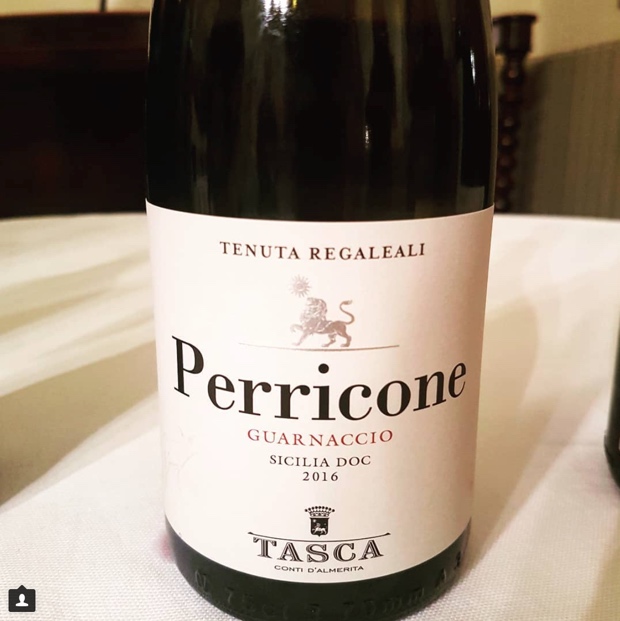
Varietal revelations in #sicilia at #tenutaregaleali @TascaWine ~ #perricone #guarnaccio #tascadalmerita
Tenuta Regaleali Perricone Sicilia DOC Tasca D’almerita Guarnaccio 2016, Sicily, Italy (Winery, WineAlign)
Endemic perricone is the grape that has always existed at Regaleali, since 1954, in the historical San Lucio vineyard. The massal selection allowed for extending the vineyard, because believing in perricone (always known as Guarnaccio at the Estate) means respecting the winemaking past of western Sicily, which was rich in this grape. Because brother Rosso del Conte was always offering an age able wine, it was decided to bottle this varietal wine for freshness and possibility. It sees 12 months in 2nd and 3rd use barrique. The first vintage was 2012 and there is a sweet nuttiness about this grape made in this way, like marzipan or nougat, with currant red fruit and in a way, like cabernet franc but without any pyrazine intrusion. A note of carob or bokser joins in, advantageous acidity for buoyancy and a calmness without any real demand by tannin. So much pleasure and confidence. Too early in its tenure to know about aging solo but how can confidence not speak to an avowal of yes? Drink 2019-2026. Tasted May 2018 tascadalmerita @TascaWine Alberto Tasca Tenuta Regaleali Tasca d’Almerita

Panelle chick pea fritters from Fud Off Catania ~ Sicilian street food
Syrah
Feudo Principi Di Butera Syrah Sicilia DOC 2016, Sicily, Italy (SAQ 10960161, $19.55, WineAlign)
An international variety perhaps and/or as old as Sicilian grape growing in Syracusa. Either way it’s well adapted to Sicilian soils, particularly here with plenty of calcari, maturing early at the end of August or latest early September. It must be managed for acidity, so expositions are very important. This is very rich but it has maintained its energy with a pulse that moves with the bigger bodied fruit. The freshness comes form east and west vineyard positions, balancing the north-south densities. There is a slightly dusty plum note but spice bookends the fruit, with some bitter amara notes at the end. Drink 2018-2020. Tasted May 201 feudobutera Zonin francescozonin Sebastien Ouellet zonin1821 FeudoButera Antonio Paolo Froio Zonin Francesco Zonin
Masseria del Feudo Syrah Sicilia DOC 2017, Sicily, Italy (Winery, WineAlign)
From estate vineyards in Caltasinetta picked early in the third week of August. Raised by a wild ferment and the use of concrete vats. More freshness and bright fruit as compared to the nero d’avola and so as a result, less bitters. There is sweetness in the mid-palate and a silky consistency. The bitters do come forth at the finish. The most expressive and floral wine in the portfolio, though still those bitters and pressed personality but in the form of syrah, it’s both characterful and meaty. Drink 2018-2021. Tasted May 2018 masseria.del.feudo Masseria del Feudo

Palermo’s multicultural streets
Mazzei Zisola IGP Terre Siciliane Achilles 2015, Sicily, Italy (Agent, WineAlign)
This is Mazzei’s first bottling of syrah and before it was added to the Noto (Doppiozetta). Like the nero d’avola the syrah vines were also planted in 2004 and 2005 (though some additional nero was planted in 2007). Syrah was put in to experiment and for blending, even though they knew it was nero d’avola territory, but the syrah has impressed the most. This is big, meaty, structured syrah with classic Mazzei bones and acidity but simply Sicilan tannin. Kind of the sort to take your breath away, tangy, high in deep red citrus and chewy. Really chewy. For all the talk of syrah across the island this is one to say “you’re on it something” but with an undertone of “we’ve always known this unspoken truth.” Drink 2020-2026. Tasted May 2018 marchesimazzei profilewinegroup Marchesi Mazzei – Castello di Fonterutoli Profile Wine Group
Maroccoli Syrah Sicilia Menfi DOC 2014, Sicily, Italy (Winery, WineAlign)
The name Maroccoli is local for “ideally situated vineyard” and syrah must find its spots to shine. An elevated hill between lake and sea is this Maroccoli’s place in the sun and the syrah it delivers is spicy, high tonal and indelibly stamped with firm grip. It’s both meaty and exotic, wildly berry filled and sharp as a tack. It seems syrah could use an extra year or two beyond the Bordolese out of Menfi. Drink 2019-2023. Tasted May 2018 planetawinery plant dependent noble_estates @planetawinery Tóth Patricia @NobleEstates

Puro e modesto @tornatorewines #degustazione with Domenico d’Antoni at #siciliaenprimeur #siciliaep18 ~ @nicholaspearce_ ~ #etnadoc #etna #etnawine
Carricante and Etna Bianco
Tornatore Etna Bianco DOC 2017, Sicily, Italy (Agent, $23.95, WineAlign)
Tasted with the estate’s Domenico D’Antoni, the Bianco is 100 per cent carricante, on very little soil above the volcano’s basalt at 500-6500m. There are 25 hectares of bianco, 24 of which is carricante that shivers with this fresh, salty nasal inhalation, still so youthful and needs a little time away. The most important thing is that you respect and understand the simplicity of this noble but basic grape. No malo, high potassium and volcanic soil so the acidity is naturally preserved. Young vines with great room for improvement at 5-5.5 g/L acidity. Find a better value in Etna Bianco, I dare you. Drink 2018-2021. Tasted May 2018 tornatorewines giuseppetornatore nicholaspearcewines @tornatorewines Nicholas Pearce
Planeta Etna Bianco DOC 2017, Sicliy, Italy (Agent, $33.99, WineAlign)
The Etna is 100 per cent carricante produced at the Feudo di Mezzo winery in the Contrada Taccione, in Montelaguardia. Now labeled simply as Etna, not as the artist formerly known as Bianco and apparently for no reason at all. Seventeen was a really warm year here in the 690-720m vineyard and so the quickest maceration was performed due to so much sun-developed colour on hand. Stayed on lees until February, also less than usual but again the hot season saw quick development. The quotient distilled is a plentiful one, a brocade like golden silk, full and full of everything it can be. Not the sapid, mineral and volcanic salty carricante of let’s say 2014 but sometimes “luxury is the opposite of vulgarity…and complication, a necessity that begins where necessity ends.” Drink 2018-2022. Tasted May 2018 planetawinery plant dependent noble_estates @planetawinery Tóth Patricia @NobleEstates
Torre Mora Etna Bianco DOC Scalunera 2017, Sicily, Italy (Agent, WineAlign)
orre Mora is the Etna outpost of Tuscany’s Piccini, owners of Villa al Cortile in Montalcino and Valiano in Chianti Classico. Scalunera is the Contrada on the northeastern edge of the volcano and the Torre Mora (and Benanti) vineyard sites at 650-670m are the first just off the lava flow, planted to Albarello bush vines. Salty, of course, but quite ripe, full of fleshy fruit. It’s a body phenolic unexpected and quite the mouthful of Etna Bianco. A broad expression that gives it all. Drink 2018-2021. Tasted February 2018 picciniwines PICCINI WINES

Godello @ Mondello ~ #italianstrike
Terra Costantino Etna Bianco DOC Deaetna 2014, Sicily, Italy (Agent, $33.99, WineAlign)
Terra Costantino’s is from Contrada Blandano in the Comune Viagrande, on soils sabbie di matrice vulcanica, a blend of carricante and catrarratto, three to one, at 500m, part bush vine and part spurred cordon. Intense aromatics for the two-varietal blend, with great concentration, so much sunlight and while lower in altitude, the palate softness is matched by great presence and high tonality to balance the opulence. Only 1900 bottles produced and though anything but a laser-focused Etna Bianco it speaks of place and opens awareness to the world. Perhaps acts a bit older than you would expect but it’s a terrific entry without too much linearity. Drink 2018-2021. Tasted May 2018 terracostantino TerraCostantino
Tenuta Di Fessina Etna Bianco DOC A’Puddara 2015, Sicily, Italy (Winery, WineAlign)
A’Puddara is from Silvia Maestrelli out of Contrada Manzudda a Biancavilla, on scisto sabbioso e fine, presenza di pomice e lapilli, i.e. sandy and fine schist, pumice and lava. This 100 per cent carricante is farmed on Alberello (bush vines) at 900m. Starts an Etna tasting with a schisty fullness, tart and a minor oxidative accent, with plenty of acidity. It’s properly salty and mineral pushed. Very correct for varietal and place with lemon all over the place. Drink 2018-2021. Tasted May 2018 tenutadifessina TENUTA DI FESSINA
Cottanera Etna Bianco DOC 2017, Sicily, Italy (Winery, WineAlign)
Here on the northern slopes near Randazzo it is Cottanera and its contiguous vineyard in blocks of Solicchiatta, Sotto Cantina, Sopra Cantina, Iannazzo, Fiume and Aurore. This is carricante of flint and citrus, from struck basalt to grapefruit and a remarkable absence of pith. It’s also fleshy and filling, with a minor blanched vegetal note but also with high quality, fine, laser-like acidity. So poised, composed and focused. Just an excellent bianco from adjoining contiguo lands, concentrato e completo. Drink 2018-2022. Tasted May 2018 cottanera Cottanera
Tornatore Etna Bianco DOC Pietrarizzo 2016, Sicily, Italy (Agent, WineAlign)
The upwardly mobile Tornatore Etna Bianco is from a single-vineyard at 600m, in the Contrada Pietrarizzo. Aging is different, now carricante grapes and just a few percentage points of catarratto five months in big (grandi botti) of 5000L It’s somewhat of a field blend style, albeit with more stature standing taut and firm of a confident structure and texture. It’s found to be almost a bit creamy, with beautiful flavours and prolongated elasticty. Drink 2019-2025. Tasted May 2018 tornatorewines giuseppetornatore nicholaspearcewines @tornatorewines Nicholas Pearce

Planeta Eruzione 1614 Carricante Sicilia DOC 2016, Sicliy, Italy (Agent, $42.99, WineAlign)
Passion projects are not for the faint of heart but they are perhaps reserved for winemakers too smart and too worthy for their own good. Eruzione is such an animal for Planeta’s winemaker Patricia Tóth, a varietal carricante ode (with 10 per cent riesling) to the great and tragic 1614 Etna eruption. If boys don’t cry I still shed a tear or two for history and for my love of this wine. It comes from the black volcanic soil of the Contrada Sciaranuova vineyard, next up the mountain from Contrada Santo Spirito. In ’16 it’s not measured by a low ’14-like pH, not quite as sharp, so therefore fuller and with more unction. It’s still an Etna-bled eruptive white, still beating raw by laser focus out of inspirational terroir. Readier too because it’s been held back a few more months for release. This wine will let you arrive at where you want to be. So many whites are mired in repeatable refrains. “Plastic passion is a Hyacinthe heart. Plastic passion is a transparent tart…Plastic passion is a gold guarantee. The plastic passion is murdering me.” Eruzione is life affirming and though other wines may pay the bills, this cariccante is the cure. Fill your prescription and drink up its passion. It’s the winemaker’s too. Drink 2018-2024. Tasted May 2018 planetawinery plant dependent noble_estates @planetawinery Tóth Patricia @NobleEstates

#palermo
Nerello Mascalese and Etna Rosso
Feudo Montoni Nerello Mascalese Rosé Sicilia DOC 2017, Sicily, Italy (111252, $22.95, WineAlign)
Adele is roast of a 10 minute press, literally, then into inox tanks. Carries the name of the finest cru of life, not vineyard, but mama. Rosato of the most lithe possibility, remarkable in its varietal nerello mascalese obviousness, singularly fruity but certo to be more sapid than anything else. Where Rosé must go, into the air, from out of the land and the womb. Pure immediacy from the volcanic grape realized and enjoyed. Drink 2018-2020. Tasted May 2018 feudo_montoni Fabio Sireci Feudo Montoni (Fabio Sireci) @feudomontoni
Tornatore Etna Rosso DOC 2016, Sicily, Italy (487090, $23.95, WineAlign)
Just a small portion of nerello cappuccio joins the masacalese in Tornatore’s Etna Rosso and it’s not quite as warm as the ’15 tasted in Toronto a month later. Spent one year in 3000 and 5000L botti after a 10 day cement maceration, to ward of reduction. Domenico d’Antino also talks about trying to avoid malolactic, “but the wine will tell you,” and they use the same yeast strain in all the wines. This was just bottled in December and it’s already so clean, transparent and honest, not green but young. It is the epitome of modern, useful and works with a yeoman’s ability to be the teachable one, for consumers and restaurant drinkers, about what is Etna today. Drink 2018-2022. Tasted May 2018 tornatorewines giuseppetornatore nicholaspearcewines @tornatorewines Nicholas Pearce
Barone Di Villagrande Etna Rosso DOC Vendemmia 2016, Sicily, Italy (Winery, WineAlign)
A different northern Etna expression is a factor of chestnut barrels, lending a distinct nutty and ulterior earthy notation to nerello mascalese. As a result the fruit is emphasized but the umami is tenured, or at least relegated to another parallel universe. There is a wealth of flavour but also a deep sense of tradition and a world that once was. It’s a bit chalky albeit liquid and viscous with some gariga, leafy, evergreen savour and mountain tea tannin. Drink 2019-2024. Tasted May 2018 baronedivillagrande katherine_mellin_ Barone di Villagrande Katherine Mellin Apparition Wines
Barone Di Villagrande Etna Rosso DOC Contrada Villagrande 2016, Sicily, Italy (Winery, WineAlign)
The self-effacing Contrada is at 700m with a southeast exposure, warmer and mildly humid. This is Etna in purport of what it really is, a Rosso derived off of a volcano, with wild flowers, sweet balsamico drizzled red fruit and this blanched almond or chestnut nuttiness from you guessed it, chestnut barrels. This is using your terroir and what grows, coming from estate trees to mesh naturally with the nerello mascalese (including 20 per cent cappuccio and mantellato) grown here. The aging renders the baby fat and leads this through a portal into dried wild strawberry, white caramel and a slightly smoky beat. There is real texture here to celebrate the singularity of a contrada Rosso. Drink 2020-2027. Tasted May 2018 baronedivillagrande katherine_mellin_ Barone di Villagrande Katherine Mellin Apparition Wines
Pietradolce Etna Rosso DOC Solicchiata 2017, Sicily, Italy (538165, $25.95, WineAlign)
The Etna “normale” is one of the DOCs great umami entries into the mountain’s northern portal slope, taken from vines growing at 600m in Solicchiata, Bush (alberello) and espalier training on stony, light sandy loam soils produce this lithe version of the estate style. It’s slightly piqued and spicy, unencumbered and unadulterated. The dry, dusty, sun-soaked and rainless season is to me perfect for this entry-level Pietradolce, even if it turns out to be a challenge for the crus of certain Contrade. This wine does not always give away this much concentration and red berry fruit as it does in 2017. It’s warm but also lined by a cool, stony streak. Not sure the structure from 2017 is as strong as ’16 and I’d rather drink this in 2018 and 2019. This sample is labeled “Campione di Vasca,” not yet bottled but it is a finished wine. Drink 2018-2021. Tasted May 2018 pietradolce woodmanws #Pietradolce Pietradolce Vigneti in Solicchiata, Etna Woodman Wines & Spirits

Tornatore Etna Rosso DOC Trimarchisa 2015, Sicily, Italy (Agent, WineAlign)
The Contrada Trimarchisa 2015 is fresher than 2014 and more complicated, simply vulcanica, of mainly nerello mascalese with some nerello cappuccio at 600m. The vineyard is close to the river and there was some vintage some rain with uneven ripening. More florals here, with layering and variegation, done up in 2nd passage barrels. The acidity and tannin are intertwined and the violets come out but true red fruit also wrapped in and with the structural components. This vintage is cooler and fresher, with age ability potential confirmed. Drink 2020-2027. Tasted May 2018 tornatorewines giuseppetornatore nicholaspearcewines @tornatorewines Nicholas Pearce
Benanti Etna Rosso DOC Rovittello 2013, Sicily, Italy (Winery, WineAlign)
Benanti’s Rovittello is nerello mascalese (90-95 per cent) with nerello cappuccio grown at 750m from the Contrada of Dafara Galluzo in the area of “Vidalba,” in the Comune Castiglione di Sicilia. Soils are vulcanico, piuttosto sciotto con sabbie laviche e giusta presenza di pietre, or lava with sand and stones. It’s a Rosso of history, welled up into this studious and wise wine, almost perfectly aged, with wood, terroir and fruit in complex combinations. Small sites, older vines and a variegation of soil make this serious and intense. It’s fine and akin to the spoken realm of nebbiolo and sangiovese though also torched by tobacco, earth and ferric necessity. Has entered the early stages of secondary life. Drink 2018-2025. Tasted May 2018 benantiwinery lenotecadimorenodemarchi Benanti Viticoltori L’Enoteca di Moreno De Marchi
Vivera Etna Rosso DOC Martinella 2012, Sicily, Italy (Winery, WineAlign)
Vivera’s Martinella is mostly nerello mascalese (90 per cent) with nerello cappuccio from vineyards at 550-600m. Contrada Martinella’s soil is volcanic, ricco di scheletro a reazione subcaida, profondità 250 metri. Deep, brooding red fruit and still a touch reductive despite its age, from Irene Vaccaro, hers is a really structured wine with liquorice and tobacco, plums and a chocolate note, as by wood still working its way through the fruit and the vulcanico. Firm, complex and grippy. Very territorial Etna Rosso with spicy bite. Drink 2019-2024. Tasted May 2018 viverawinery Vivera Winery

Planeta Eruzione 1614 Nerello Mascalese Sicilia DOC 2016, Sicily, Italy (Agent, $42.99, WineAlign)
Like the yellow lorry carricante thriller it is Etna Rosso incarnate that is portrayed in this Eruzione red lorry nerello mascalese (with nine per cent nerello cappuccio) from up the mountain’s 890m vineyards of (Contrada) Sciaranuova, but with some fruit from lower altitude at 600m. The vine age is part 2008 and part 20 year-old vines and a small section going back 90 years but just a small spot. The higher you climb for nerello macalese the more finesse you acquire. This Eruzione is swimming through lava with it, smoothed by plenty of silky texture, raspberry and chalky liquid tannin. Nerello, “you ain’t nothing but a true embrace. You ain’t nothing but a hidden face.” Your Planeta edition gets neither more refined, elegant nor focused. You’ve been descried as the “alternative classic” or the new light pinot noir. Maybe frappato, but not you, nerello mascalese. Let’s leave you out of the discussion. Leave you alone. Talk about the weather. Drink 2019-2025. Tasted May 2018 planetawinery plant dependent noble_estates @planetawinery Tóth Patricia @NobleEstates

All in, all out Contrade comparative @pietradolce #etna degustazione from #michelefaro e #mariofaro
Pietradolce Etna Rosso DOC Archineri 2016, Sicily, Italy (Winery, WineAlign)
Archineri is a trifecta Etna Rosso from the Contradas of Zottorinoto, Rampante and Solicchiata on Mt. Etna’s northen slopes, same soil as the ER DOC and at various altitudes, between 600-900m. The ideal here is aimed at layering and variegation, to take three blocks of similar topography and geology for what is a broad but focused northern expression. Archineri might mean “black bows” or better yet “black arches” and the label offers a whimsical, Beatles’ Yellow Submarine like iconography. This is nerello mascalese that flows like long raven hair, trailing behind beautiful fruit and the classic sweet stone umami of these subtle northern expressions. From a great vintage no doubt and ready to enjoy if need be but will morph and utter more mythologies as time goes by. This sample is Campione di Vasca, not yet bottled, but it is a finished wine. Drink 2020-2028. Tasted May 2018 pietradolce woodmanws #Pietradolce Pietradolce Vigneti in Solicchiata, Etna Woodman Wines & Spirits
Pietradolce Etna Rosso DOC Contrada Santo Spirito 2016, Sicily, Italy (Winery, WineAlign)
Contrada Santo Spirito Etna Rosso is also on the northern slopes at approximately 850-900m. The Santo Spirito is less subversive than Rampante, more likely to please early but with higher tone and acidities. This really hits the high notes in opposition to the soprano of Rampante. A more mineral for sure if still umami based nerello mascalese with similar aging potential, albeit along a parallel graphing line. This sample is Campione di Vasca, not yet bottled, but it is a finished wine. Drink 2020-2028. Tasted May 2018 2-3 pietradolce woodmanws #Pietradolce Pietradolce Vigneti in Solicchiata, Etna Woodman Wines & Spirits
Pietradolce Etna Rosso DOC Contrada Rampante 2015, Sicily, Italy (Winery, WineAlign)
Rampante is from Michele Faro’s nerello mascalese way up at 850m, off of prephylloxera alberello bush vines 80-90 years-old. Rampante is in Solcchiata, Comune Castiglione di Sicilia. The soil is franco sabbioso con abbondante presenza di scheletro, sandy loam with skeletal stone fragments. It’s a matter of rusticity and liquid chalk with a young curative meets medicinal perfume. Tannins are quite chalky, as is the acidity without a true integration (in its youth) for structure but it wants to take you there, so you’ll have to exercise extreme patience. Old vines and inherent wisdom are everything here in its purest and most honest form. Few other wines will develop any wilder and earthy secondary aromas than this. Not a wine for the uninitiated. Drink 2020-2028. Tasted May 2018 pietradolce woodmanws #Pietradolce Pietradolce Vigneti in Solicchiata, Etna Woodman Wines & Spirits
Pietradolce Etna Rosso DOC Barbagalli 2015, Sicily, Italy (Winery, WineAlign)
The estate flagship Etna Rosso Barbagalli is taken from Contrada Rampante in the area that is known as “Barbagalli” in Solicchiata. This northern Etna 80 to 100 year-old pre-phylloxera vineyard delivers the most naturally earth-crusted, umami-laden expression in hyperbole, concentration and peak spiciness. There is a buzz about this nerello mascalese that the rest of the portfolio does not pulse with, neither outward through expressionistic energy nor inward, retracted and self-effacing by implosive feeling. The texture separates itself with multi-faceted tenor and a tremor of explosive potential that might strike at any time, anywhere, any place. This will turn into something ethereal, of that there can be little doubt. Drink 2022-2032. Tasted May 2018 pietradolce woodmanws #Pietradolce Pietradolce Vigneti in Solicchiata, Etna Woodman Wines & Spirits

Serious, call me in 20 years @etnadoc Rosso from @cottanera
Cottanera Etna Rosso DOC Dicittassetesalme 2016, Sicily, Italy (Winery, WineAlign)
Dicittassetesalme could be translated as “seventeen corpses” but in this case it’s an ancient way of measuring a Sicilian vineyard. One “salme” essentially equals just over 17,000 square metres, or one and a half hectares, more or less. The Dicittassetesalme is nererello mascalese on lavico-argiloso soils, a mix of basalt, limestone and clay. It is structured for the long haul and filled to overflowing with intensities to distract, occupy and take over your senses. It’s a brooding affair while this young, standing firm and strong, raising the hairs on the back of the neck and in demand of full command attention. The future is wide open. Drink 2021-2030. Tasted May 2018 cottanera Cottanera

Good to go!
Godello
Twitter:
Instagram: mgodello
WineAlign
